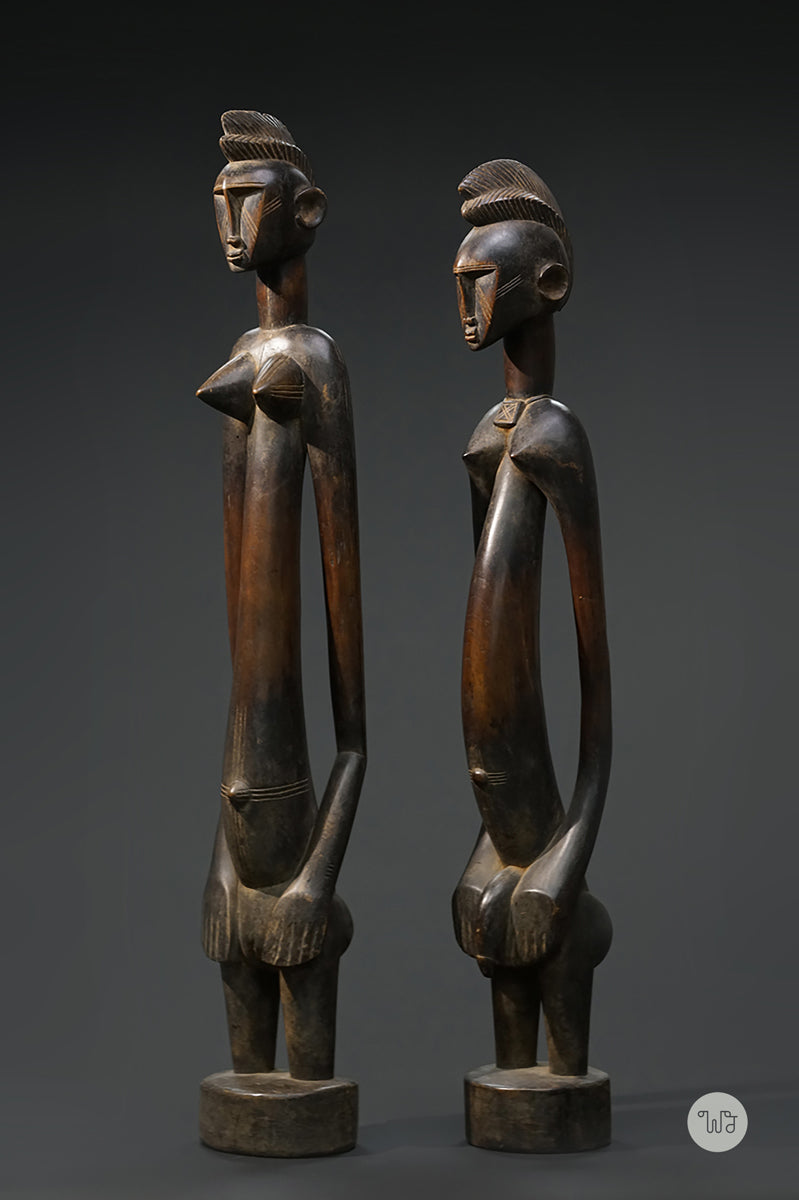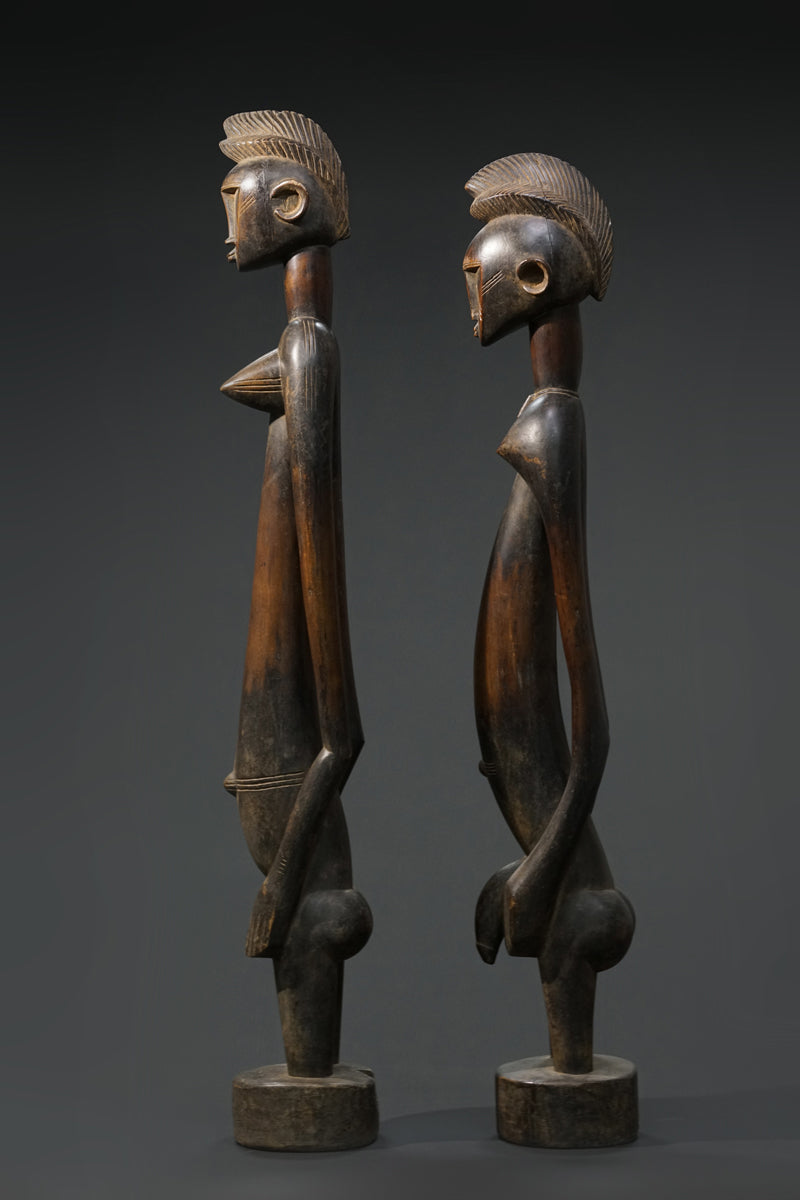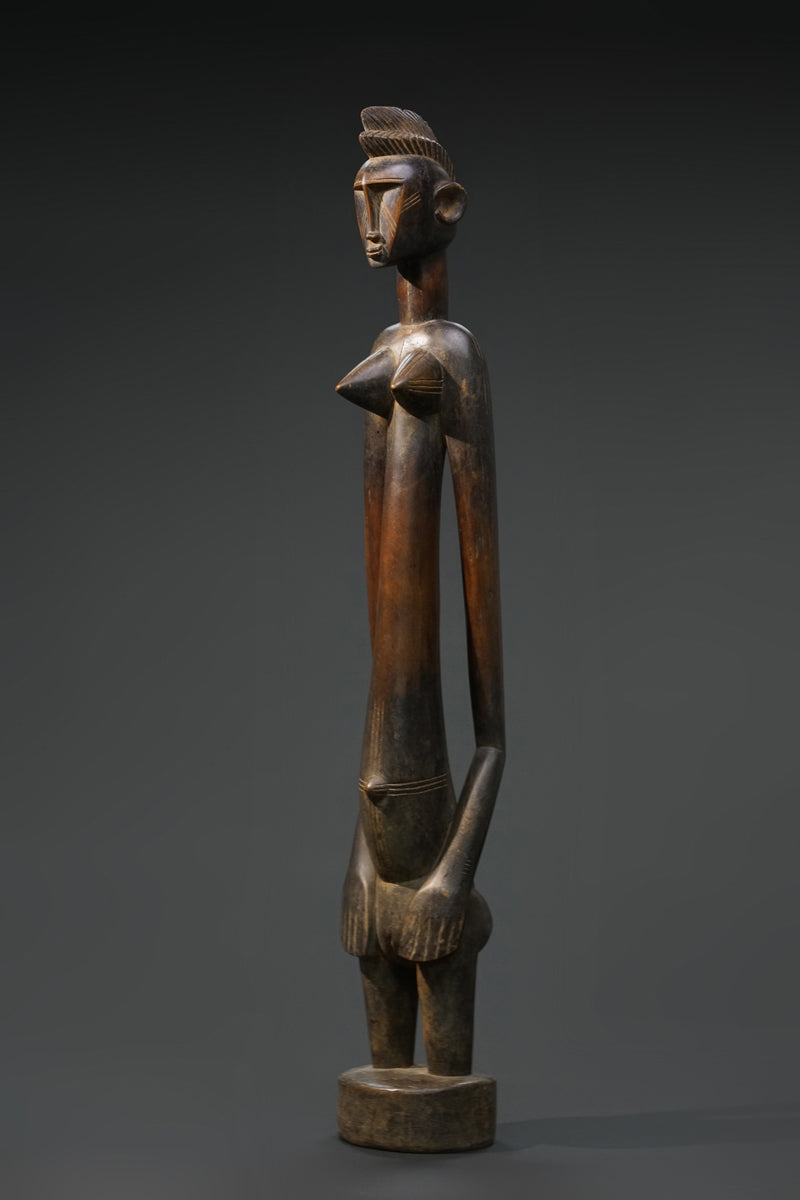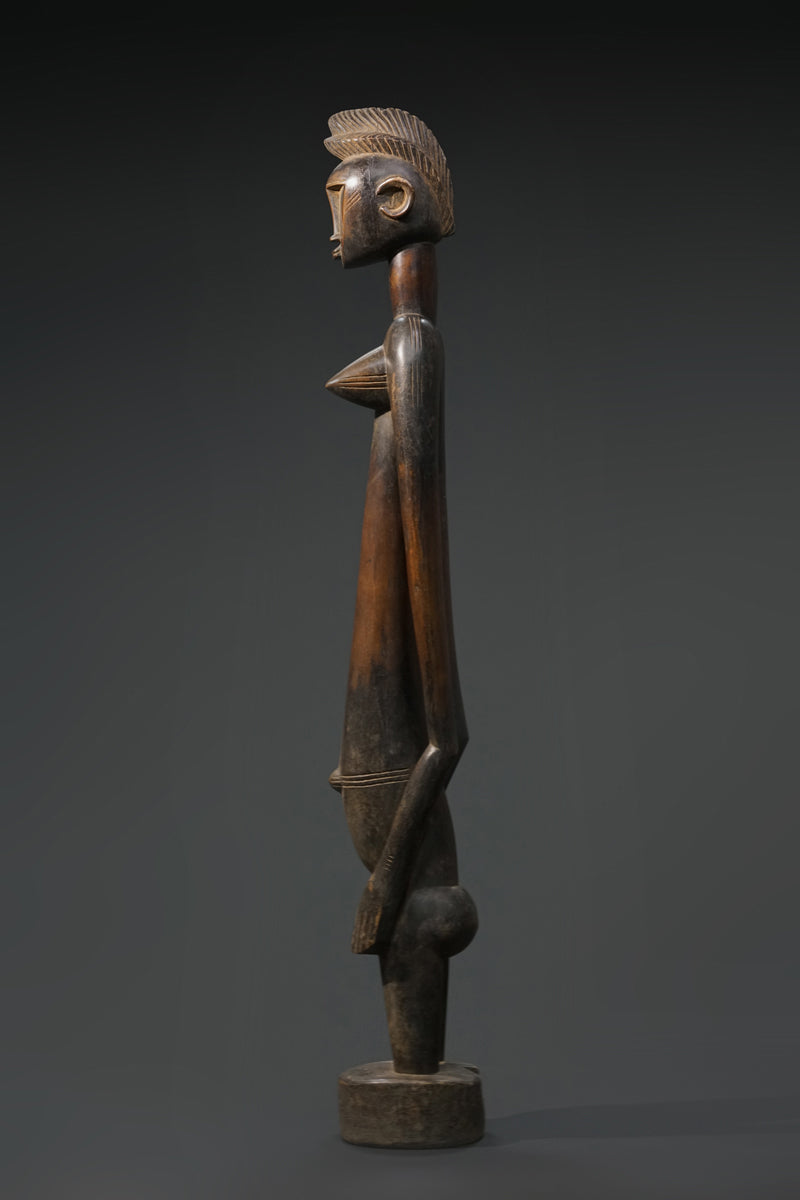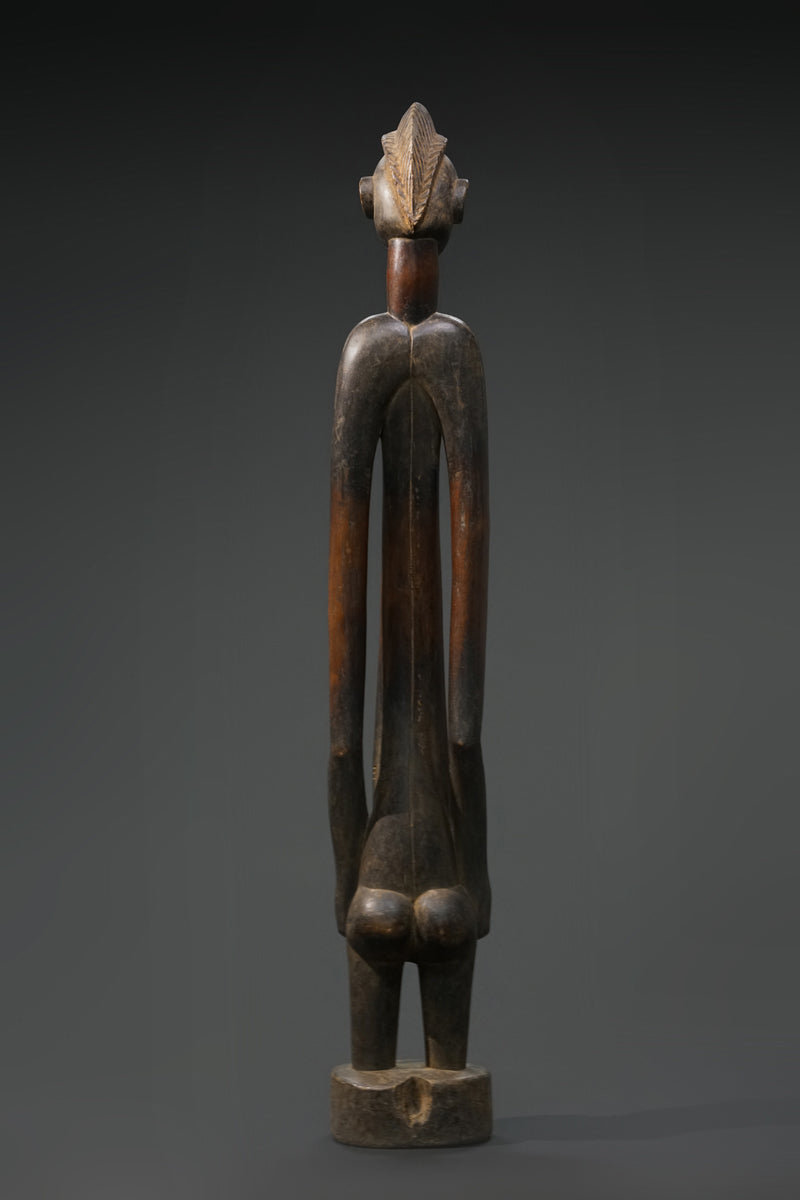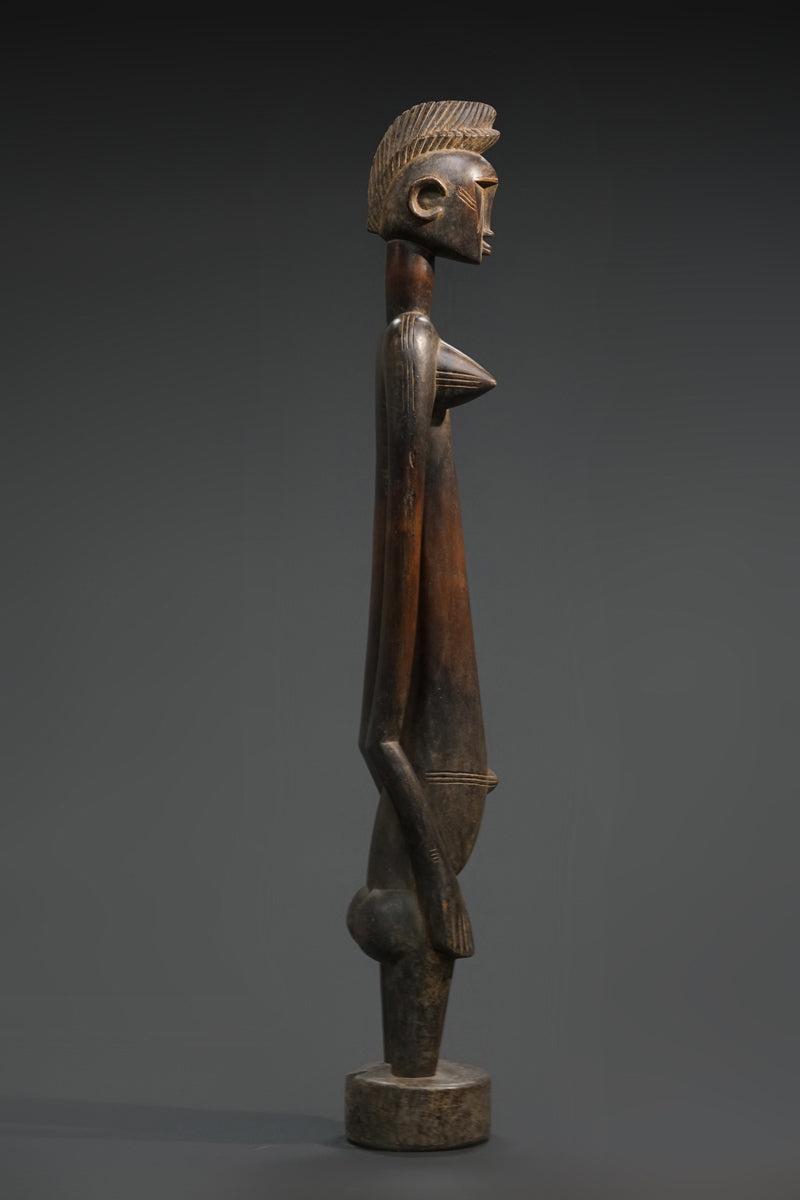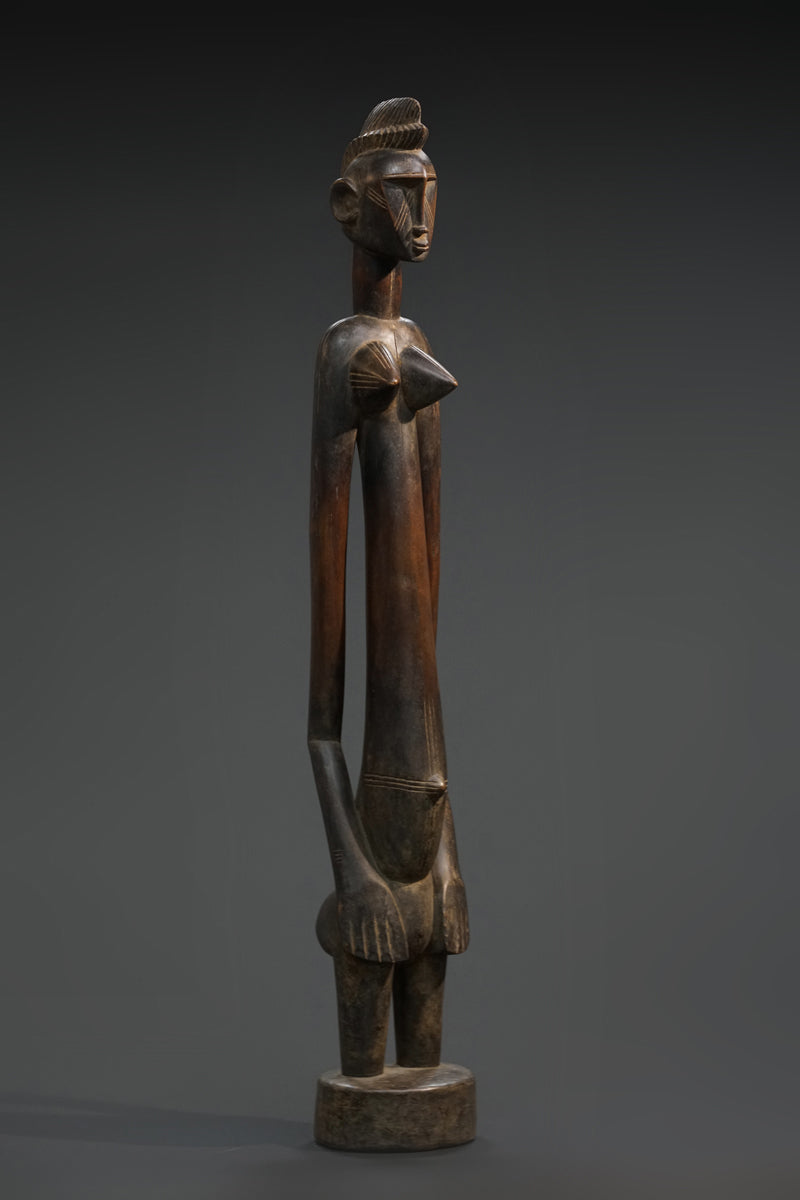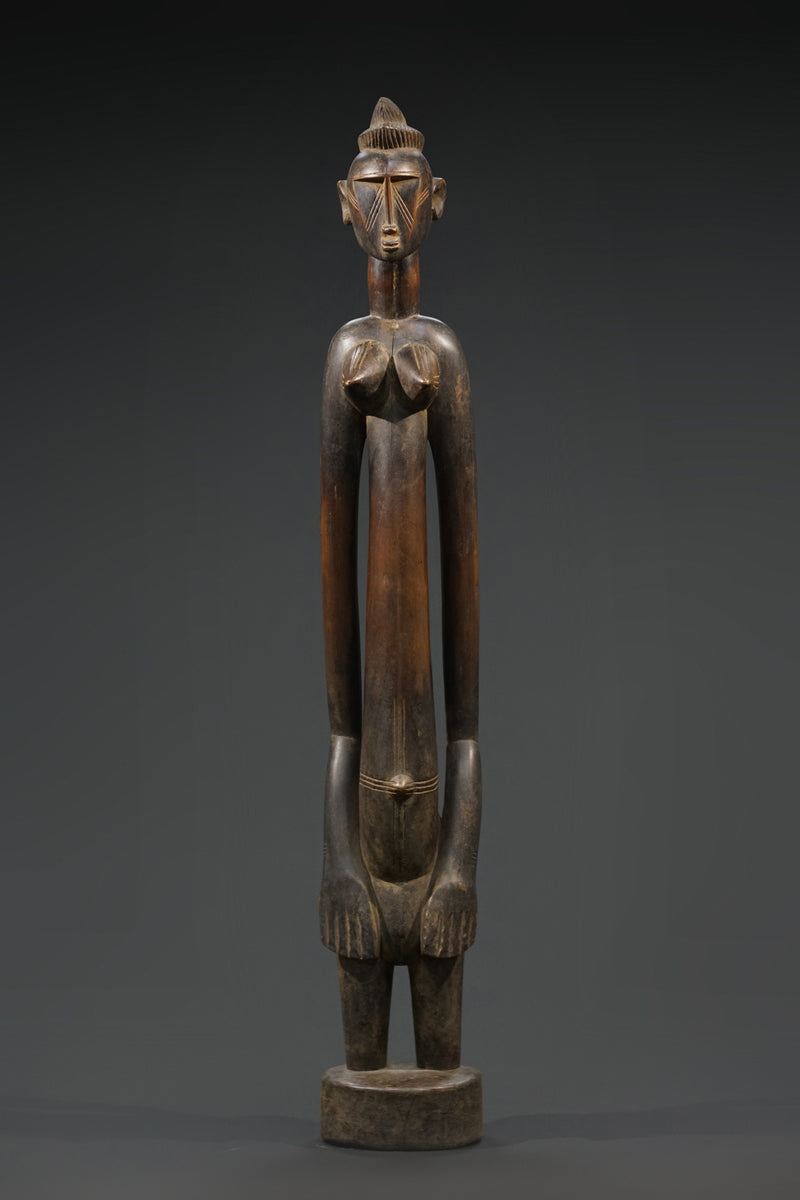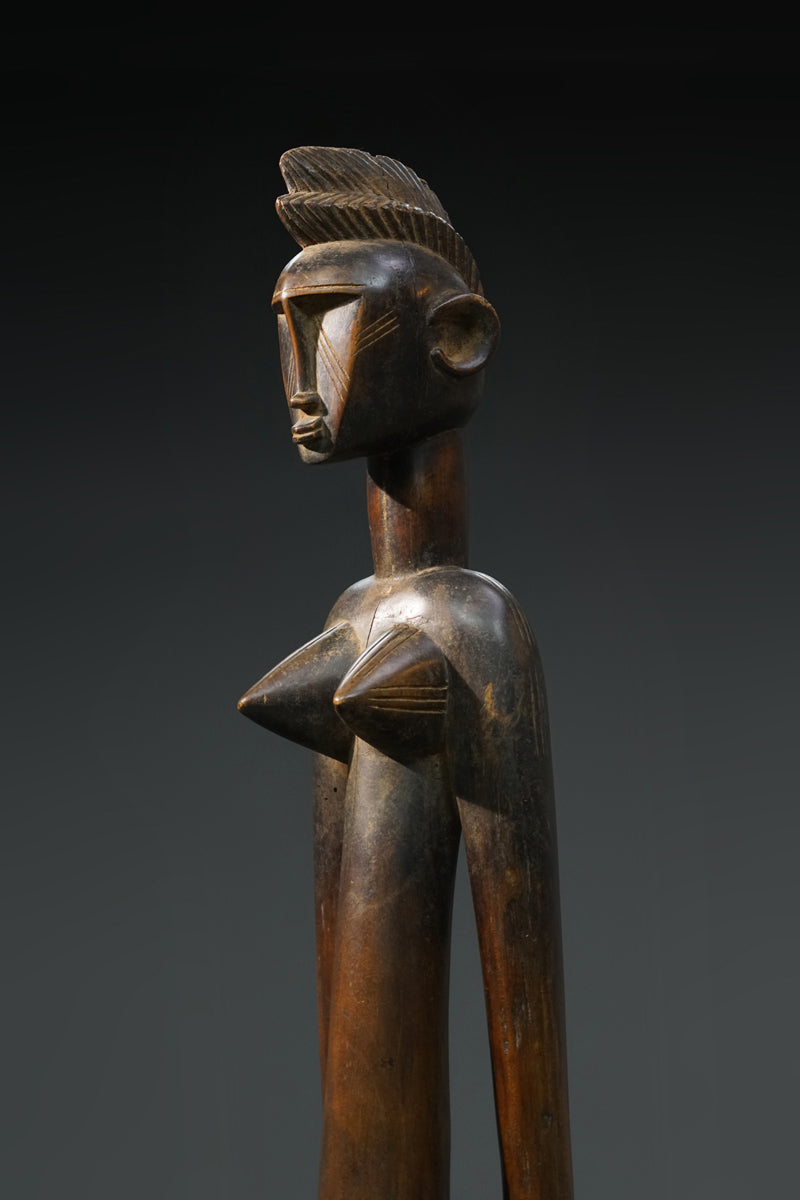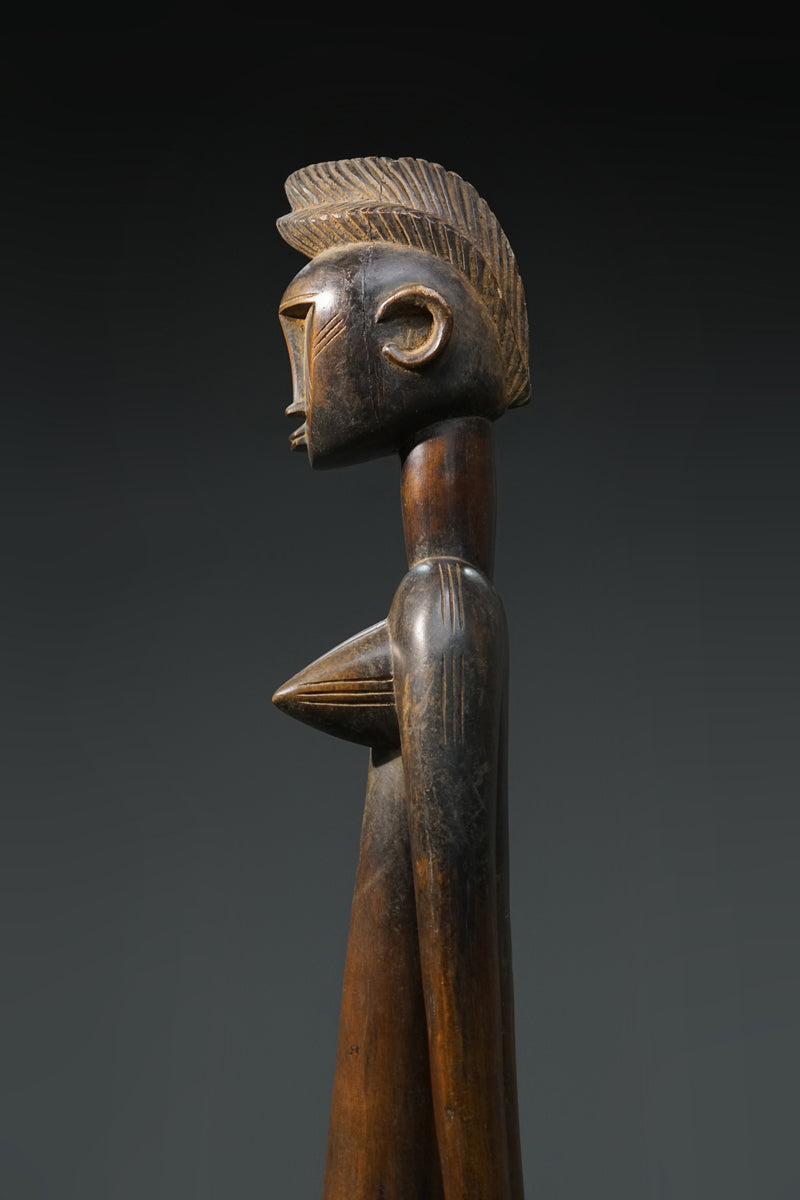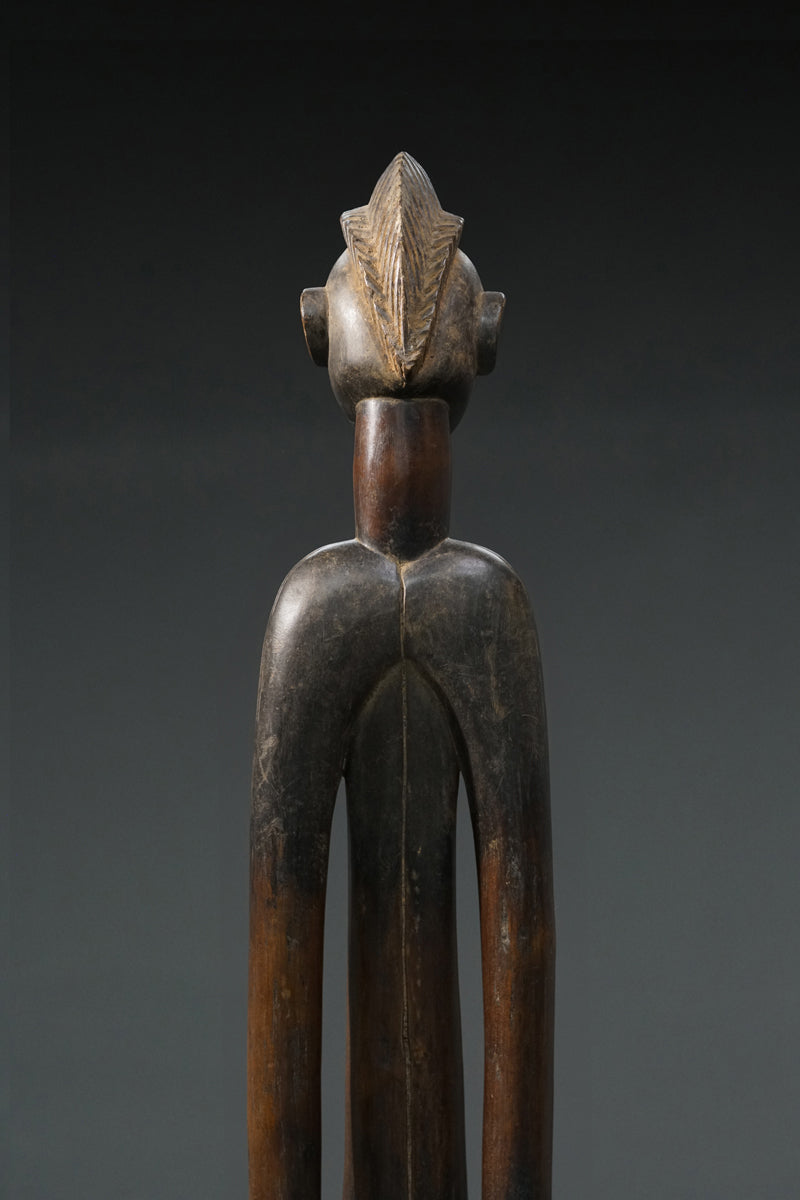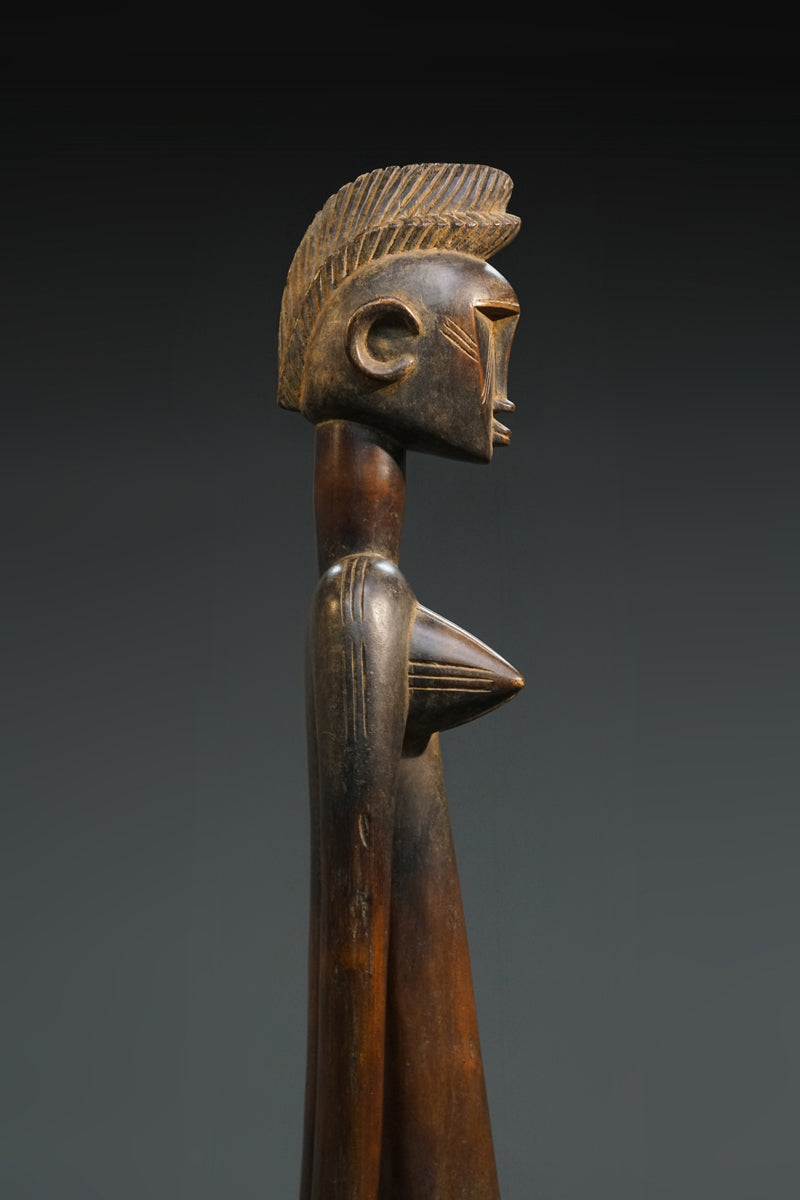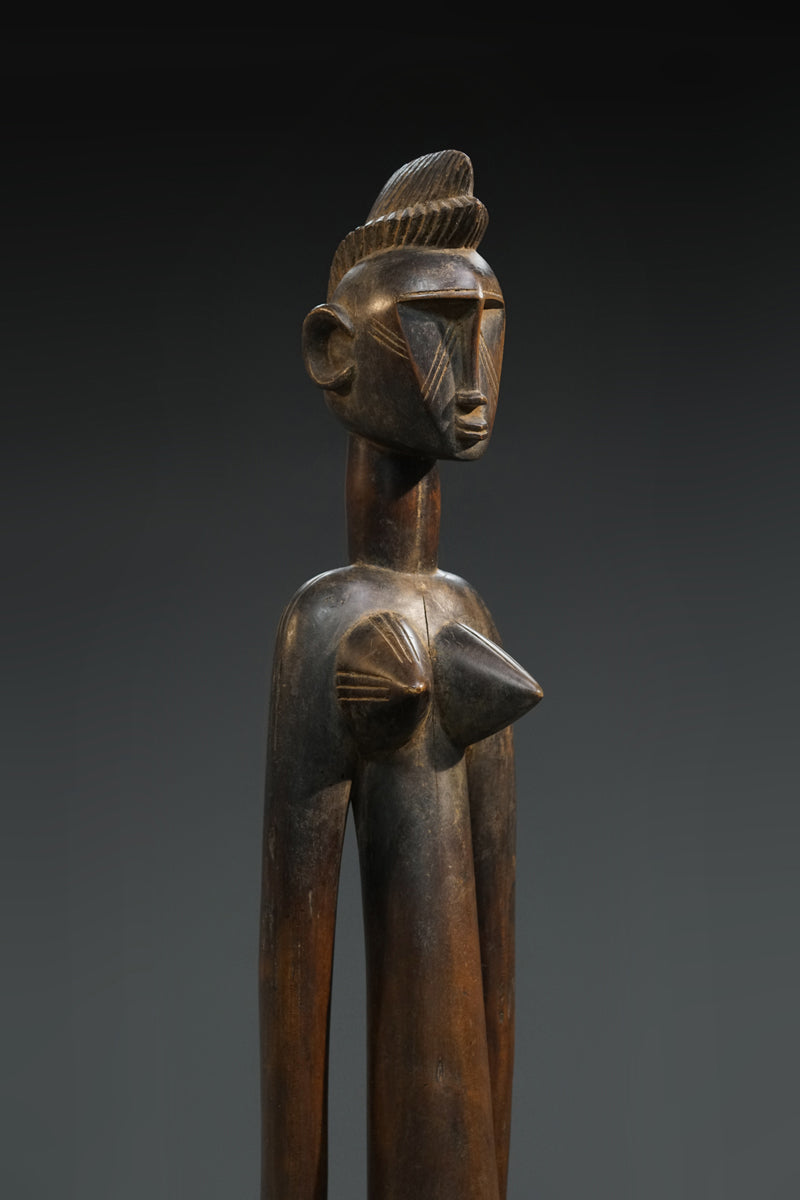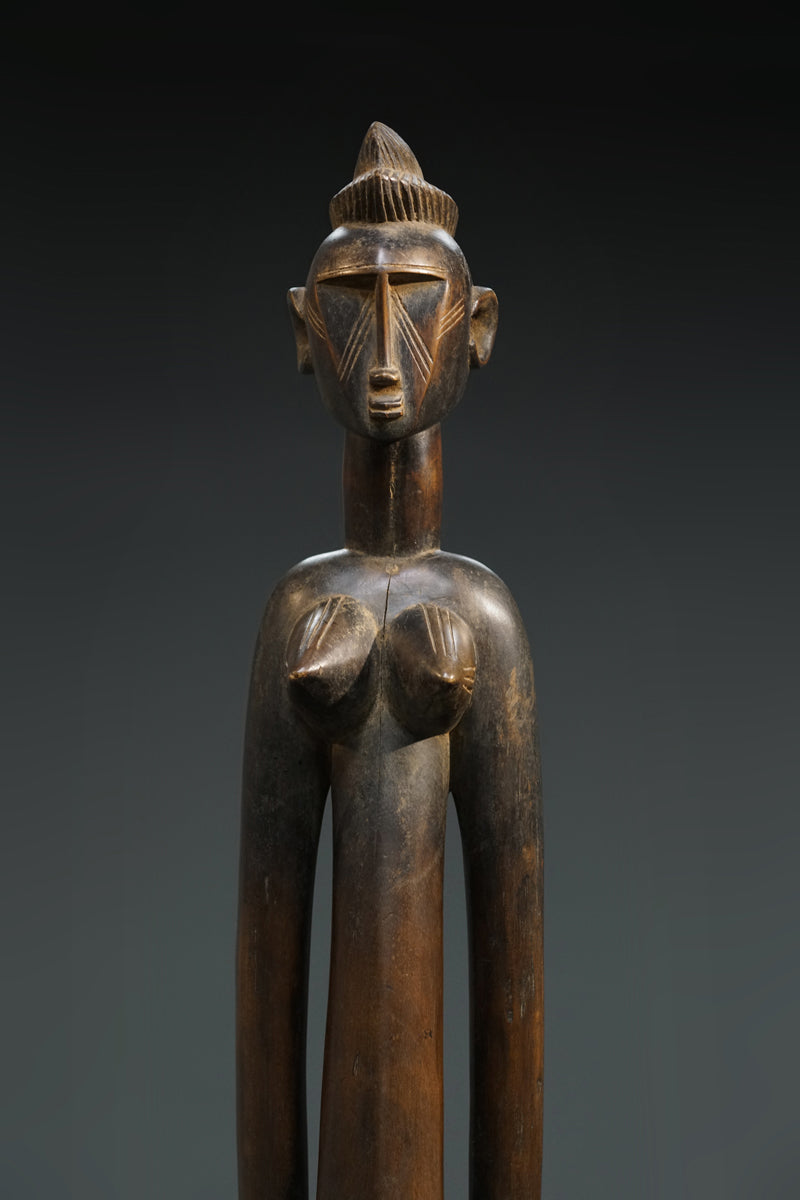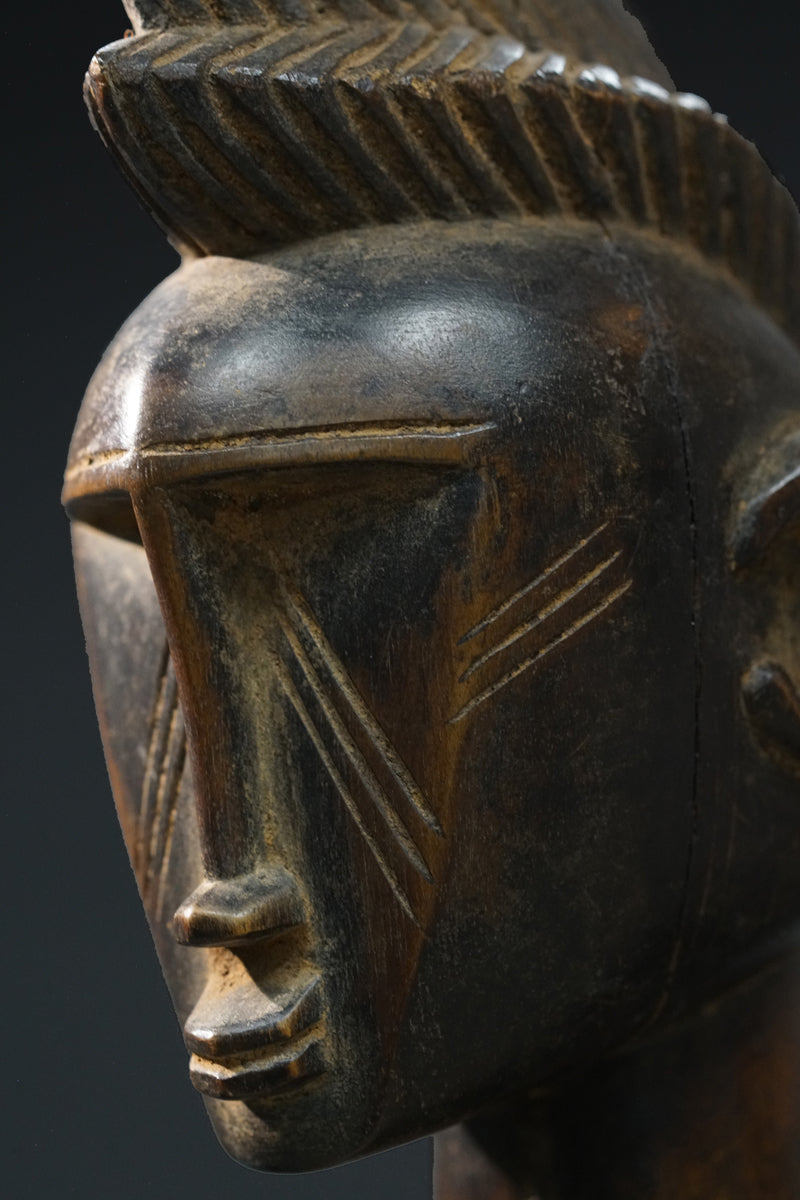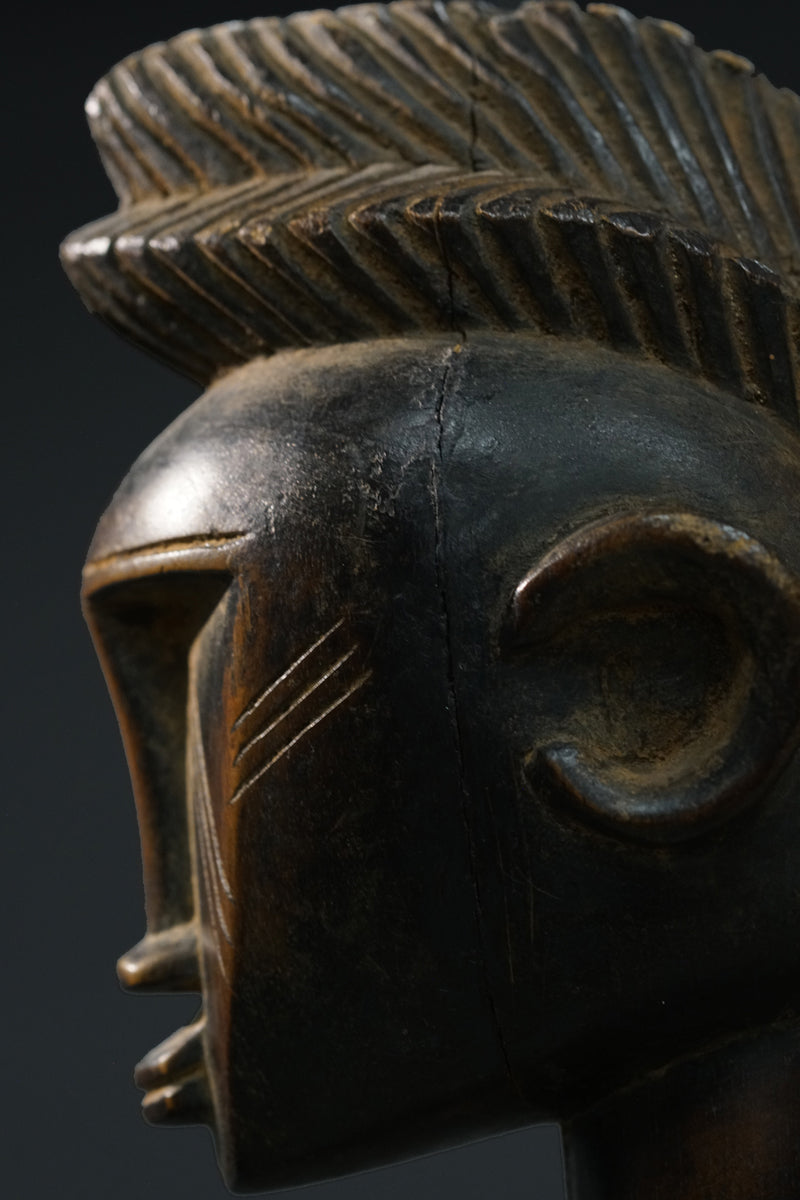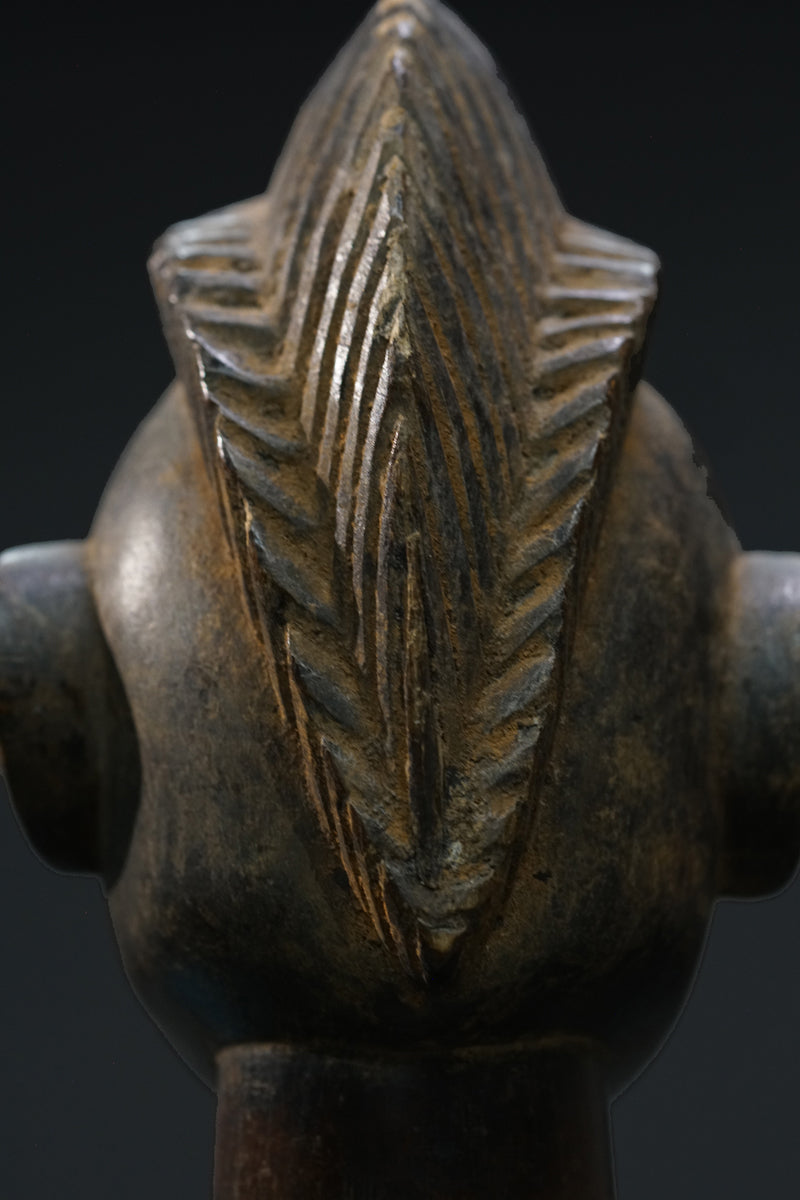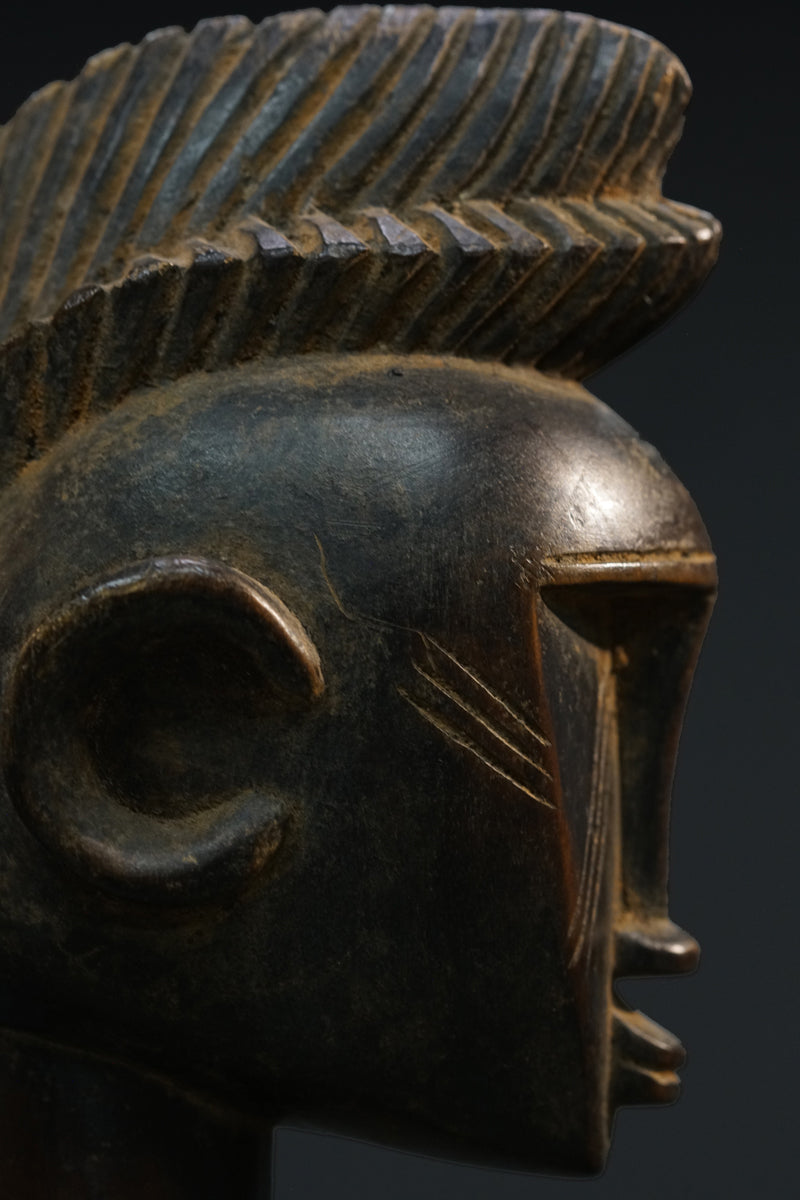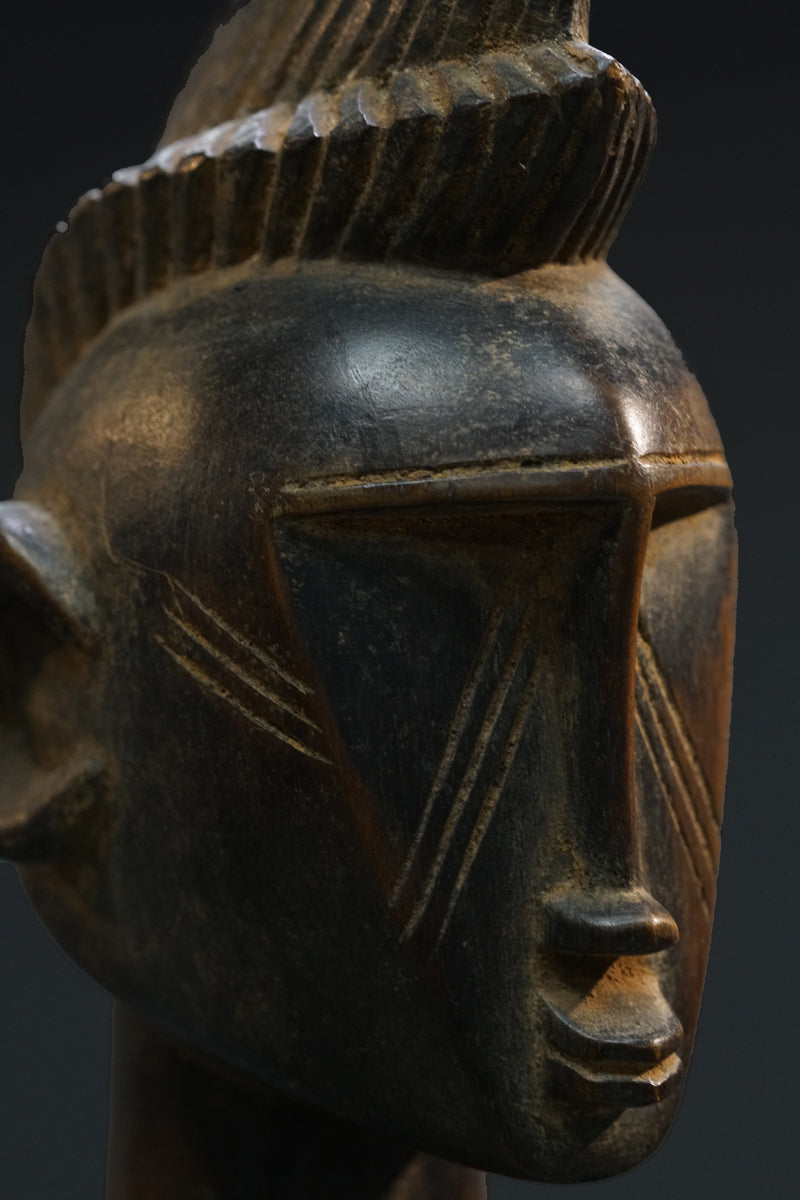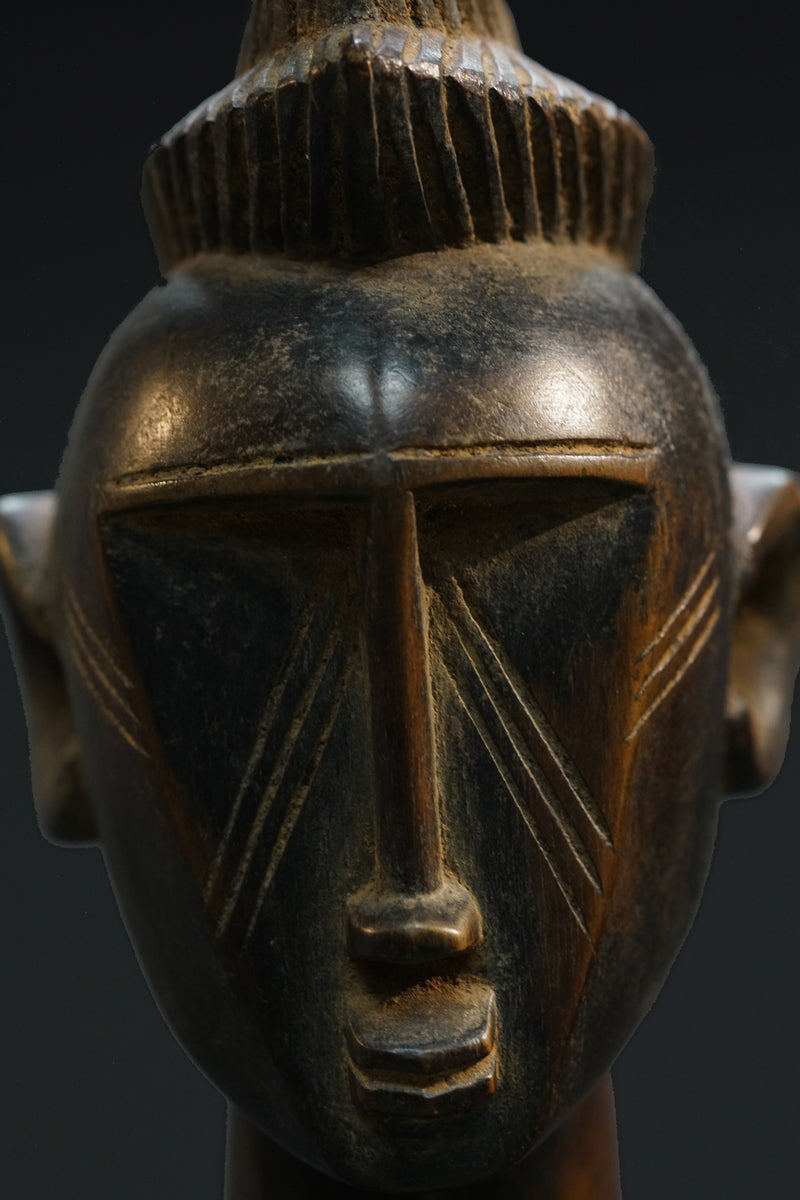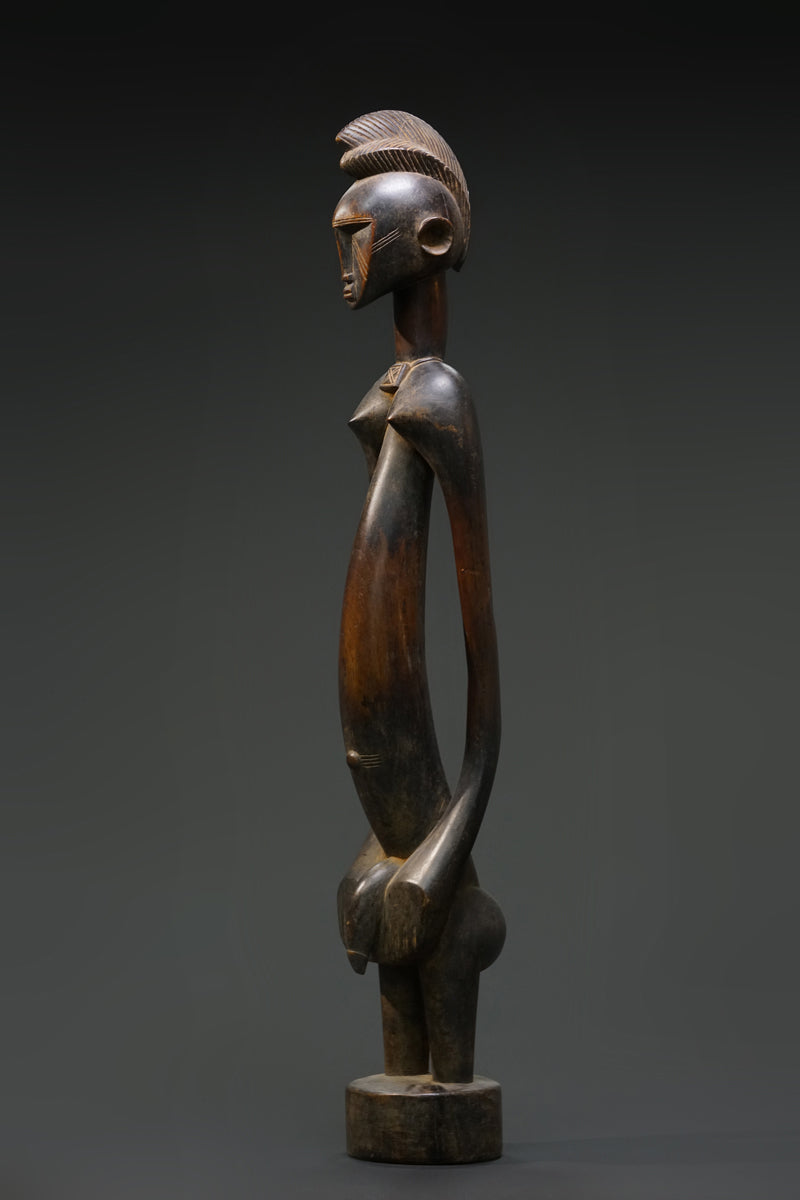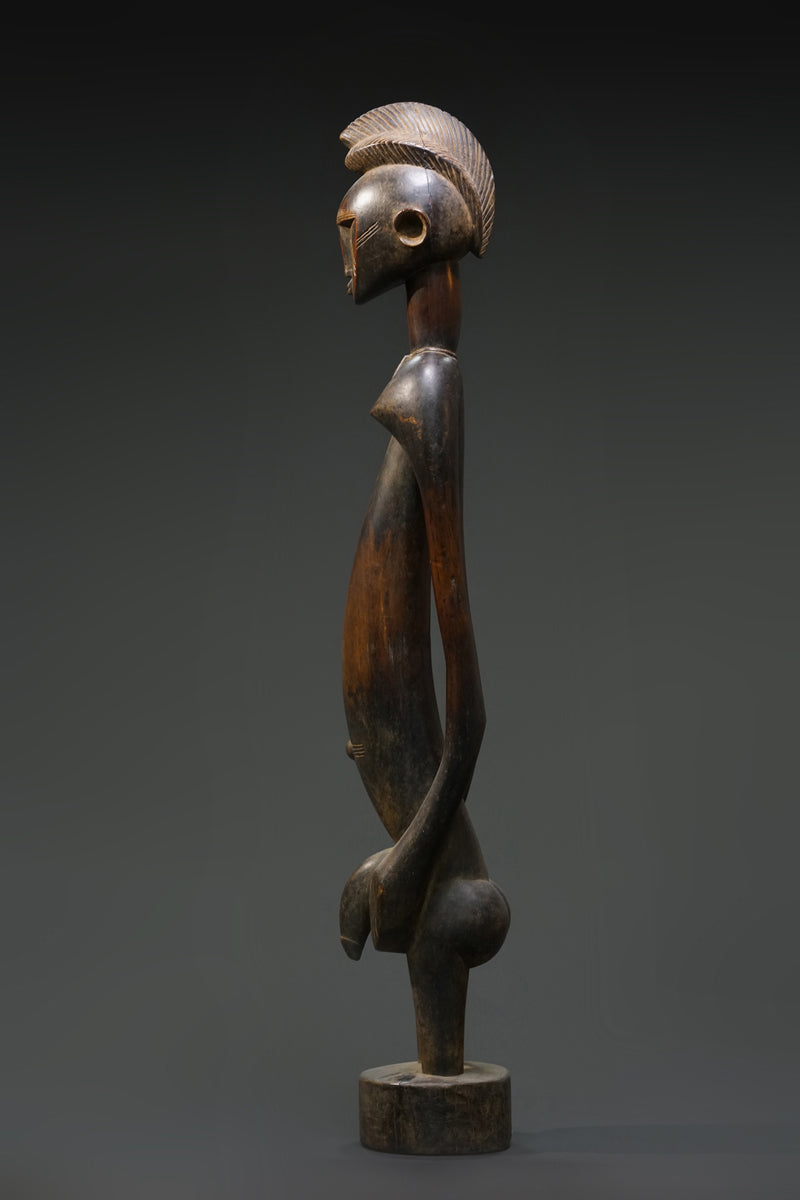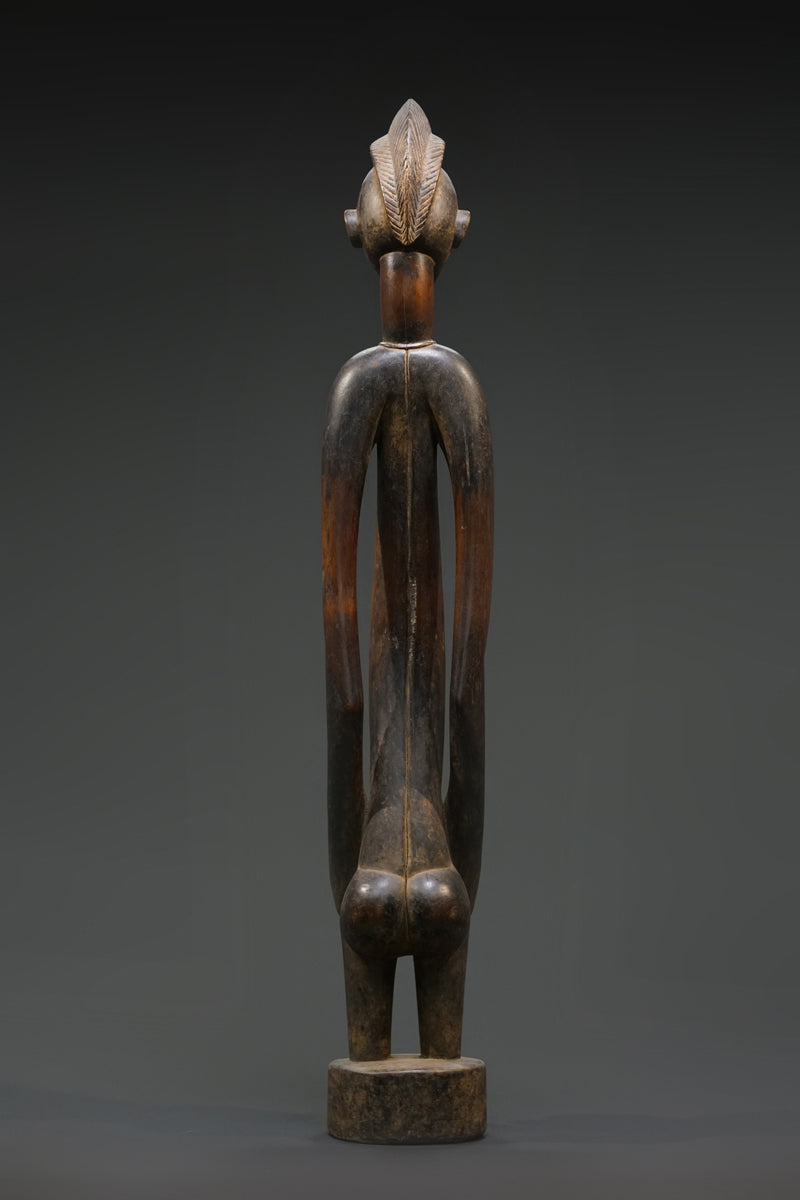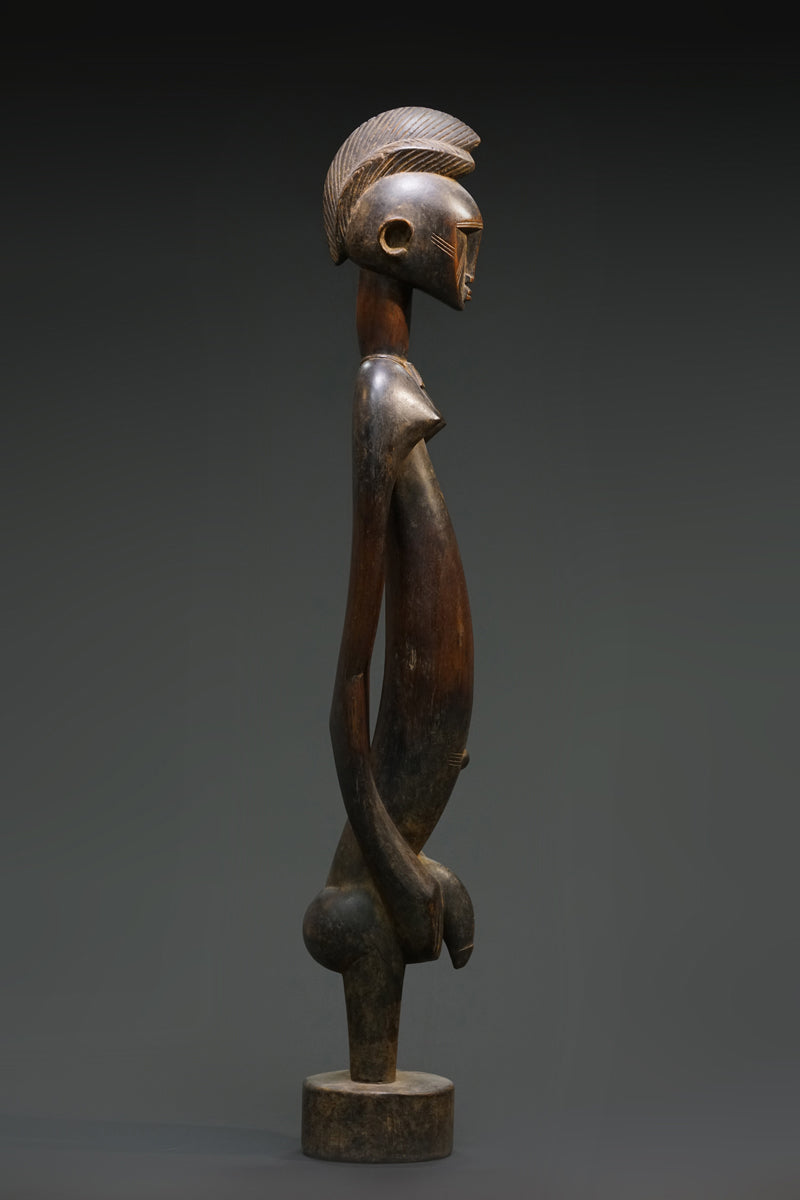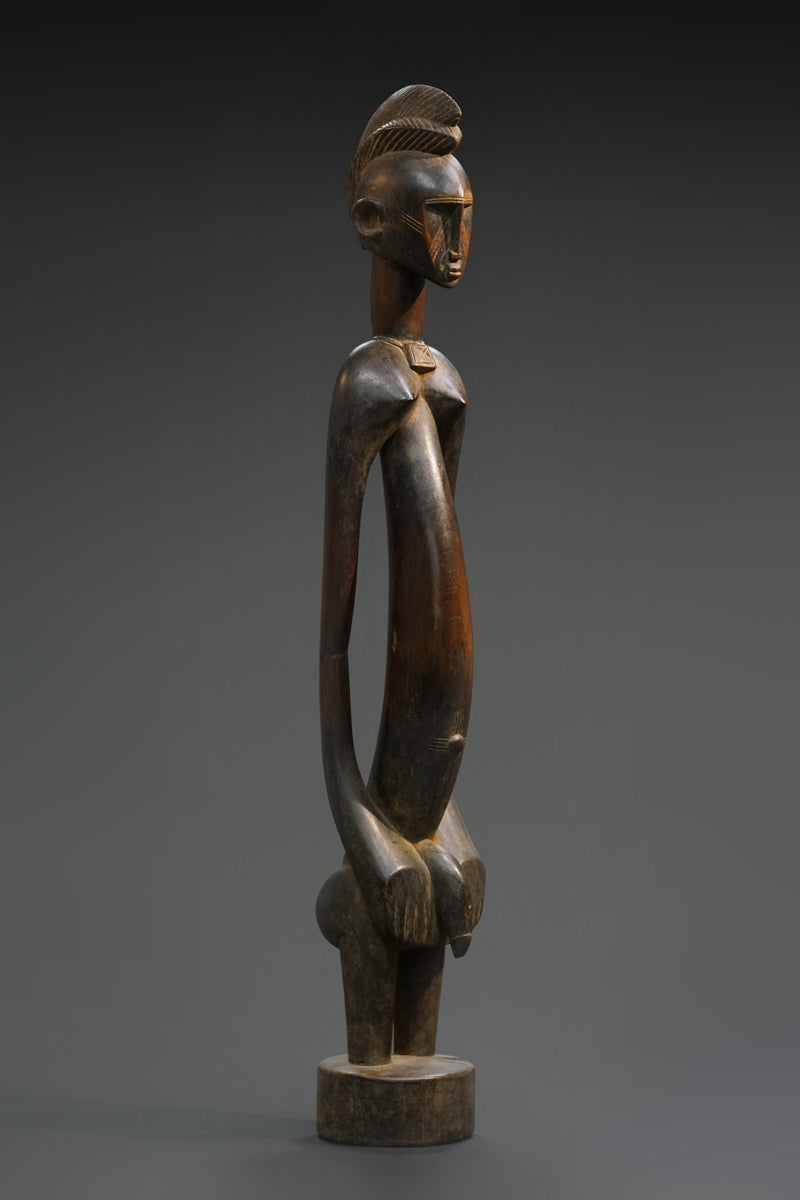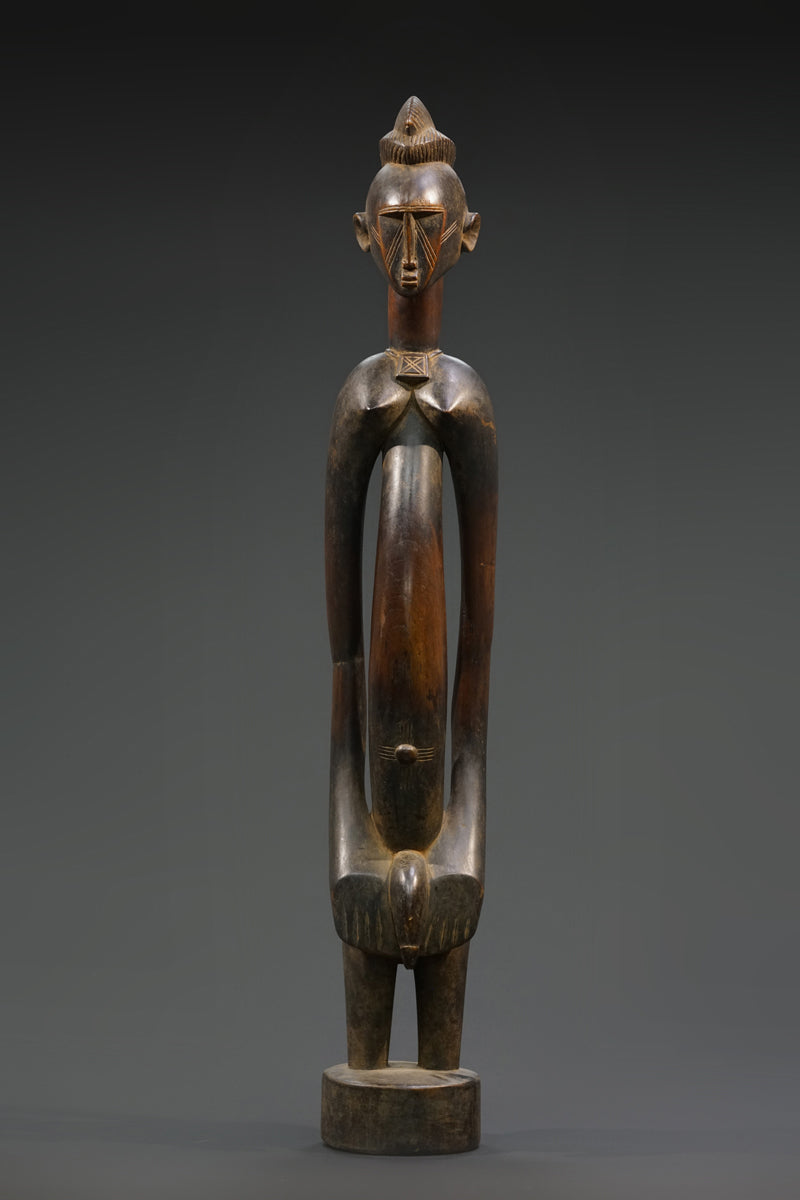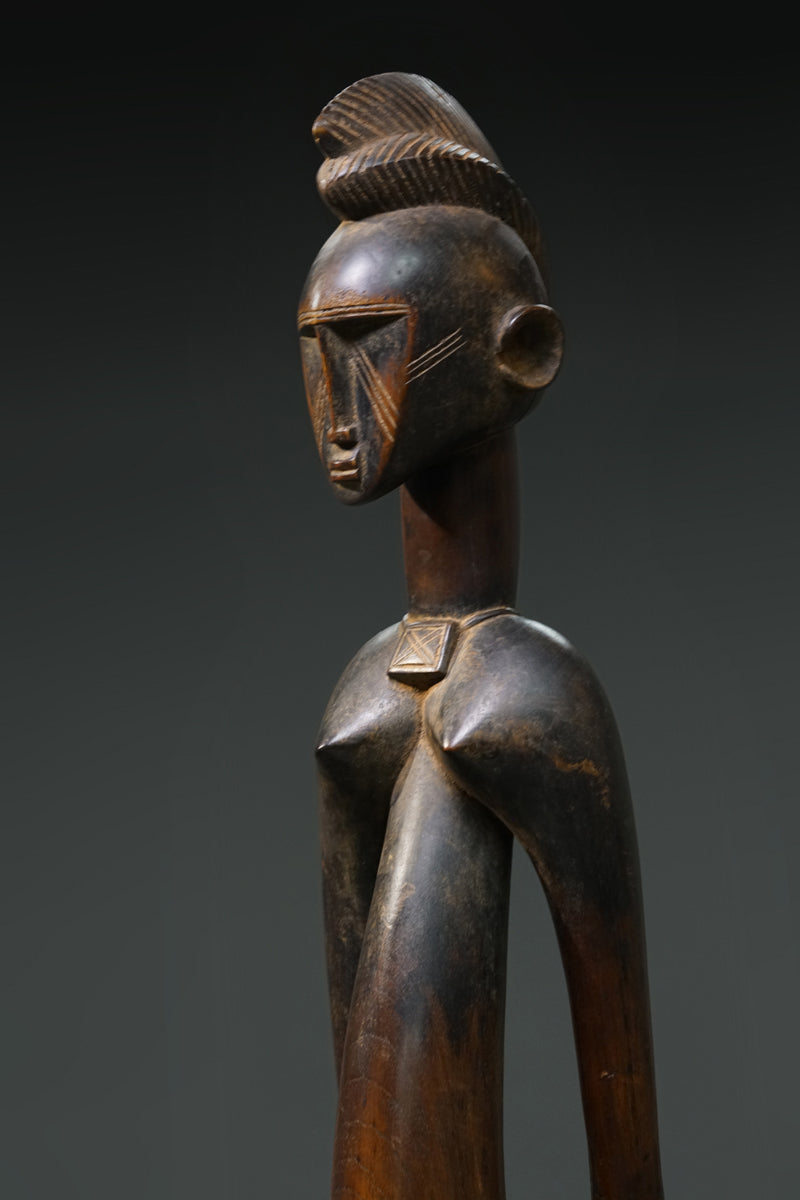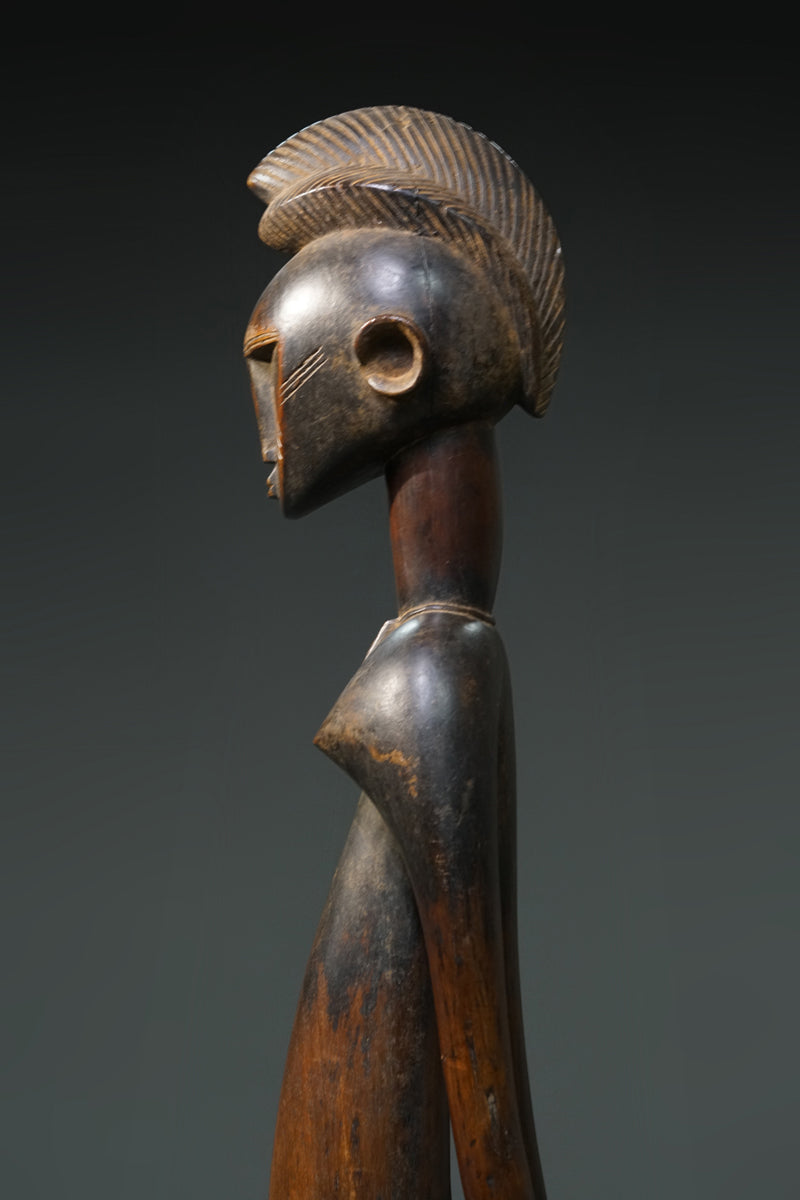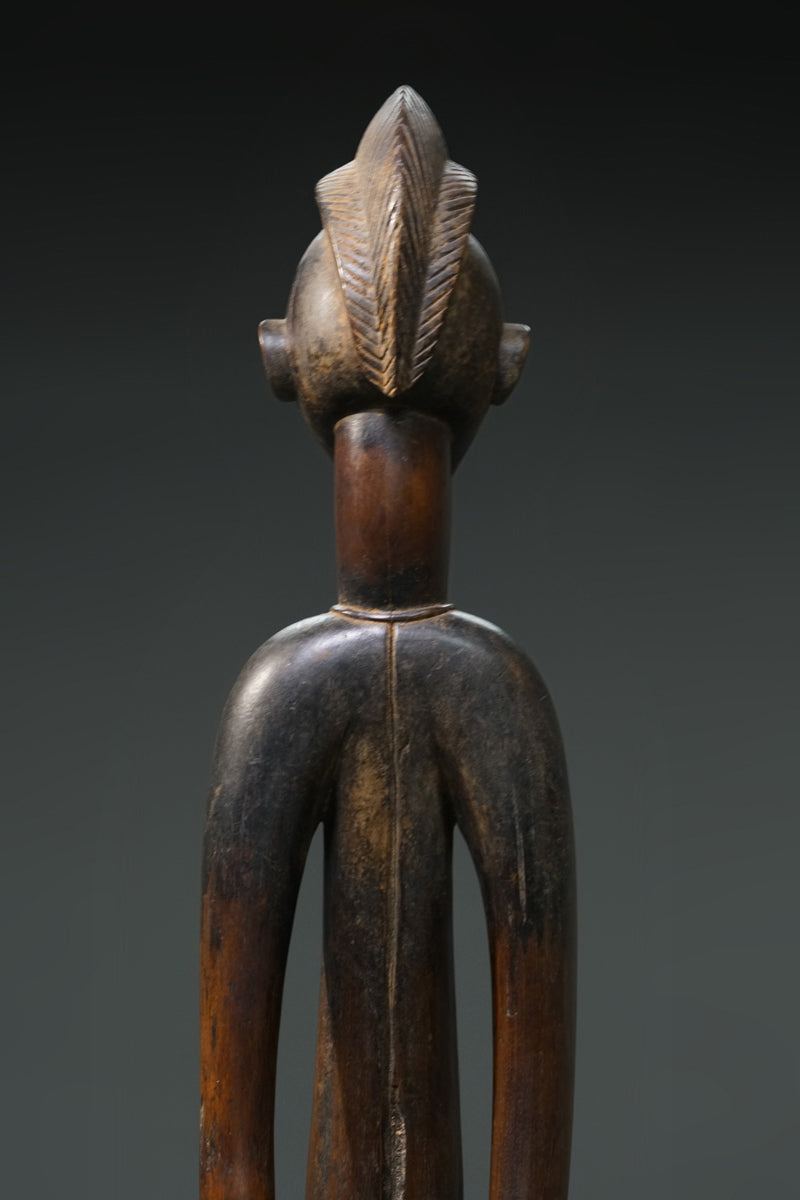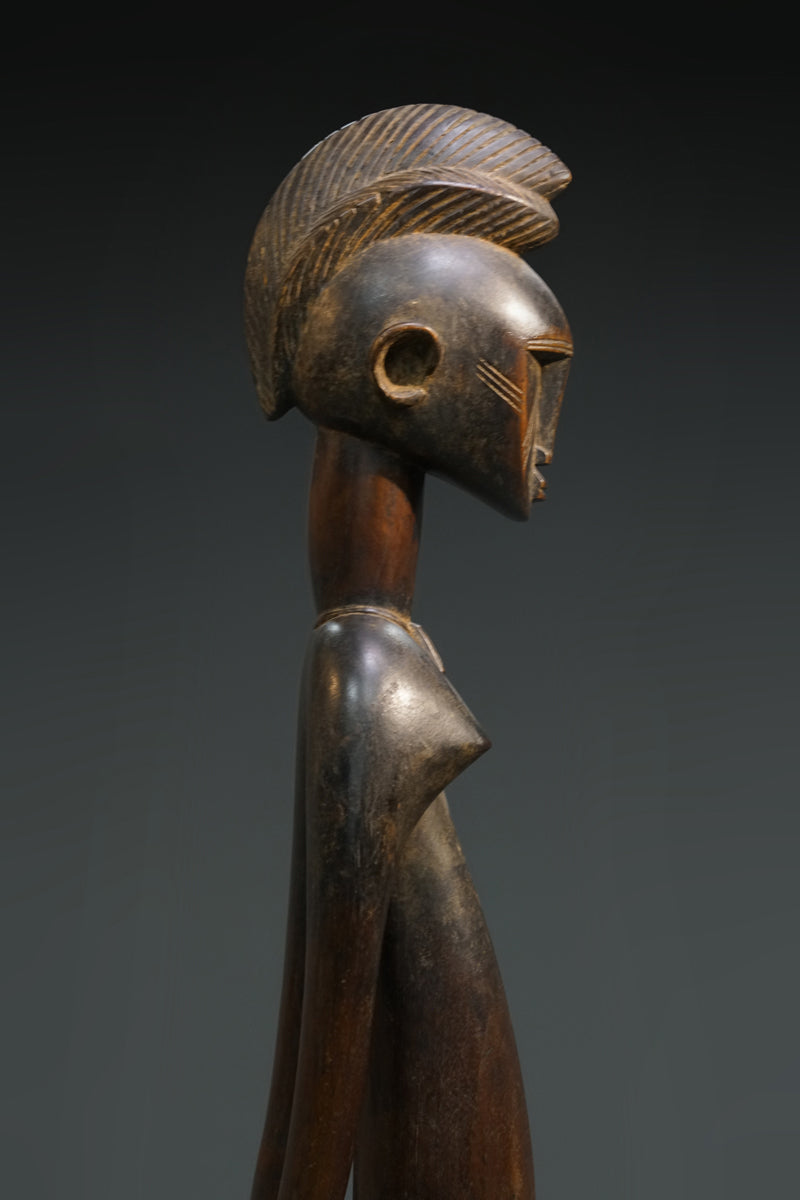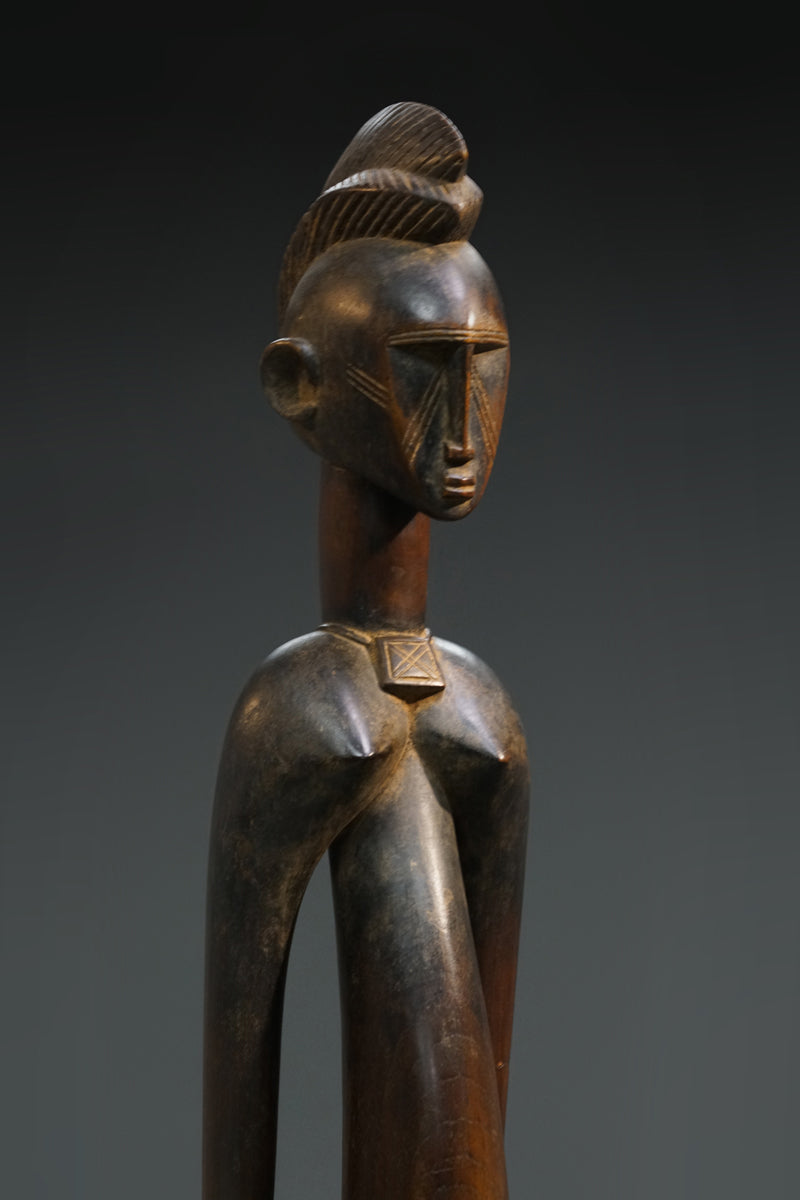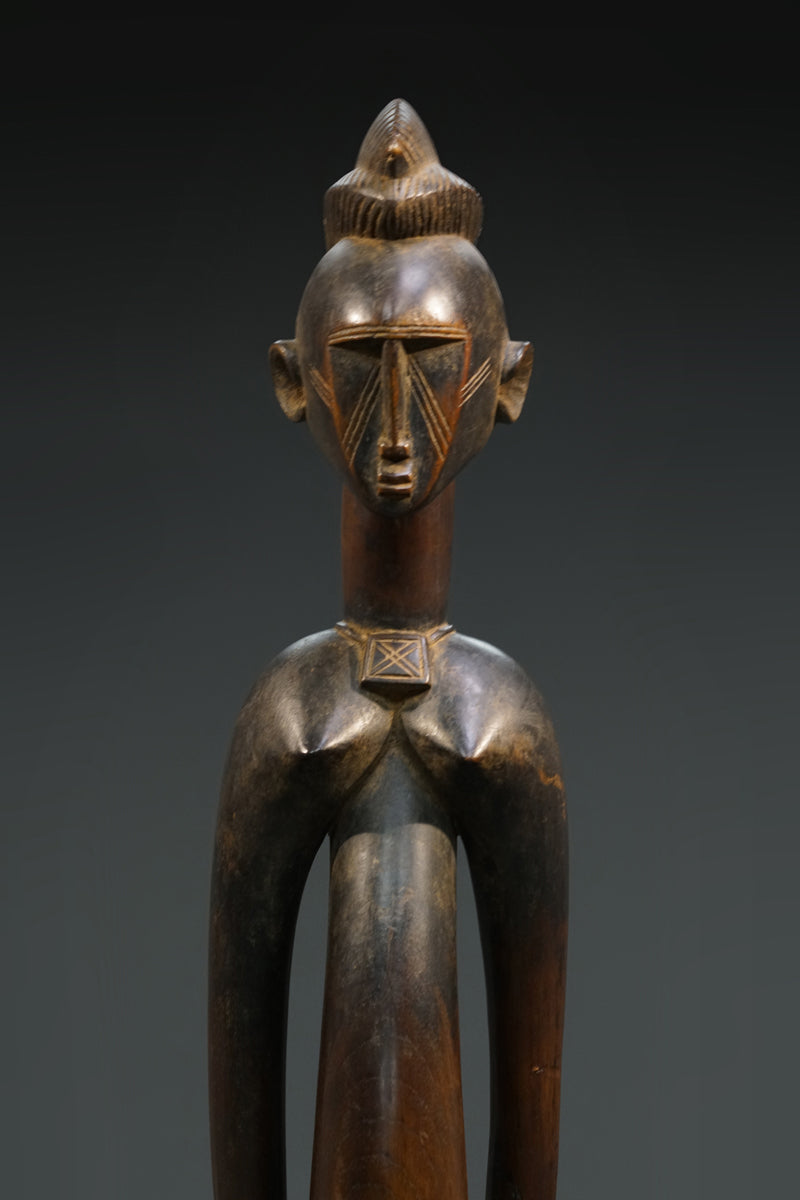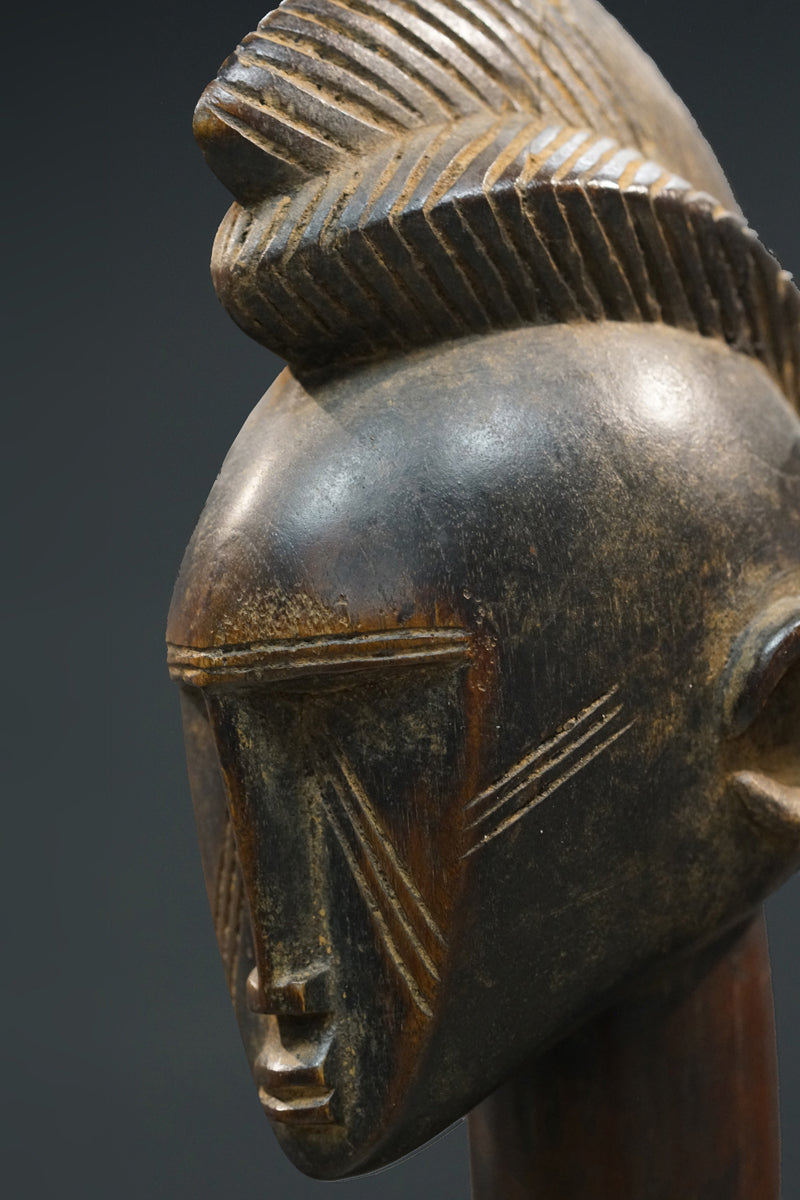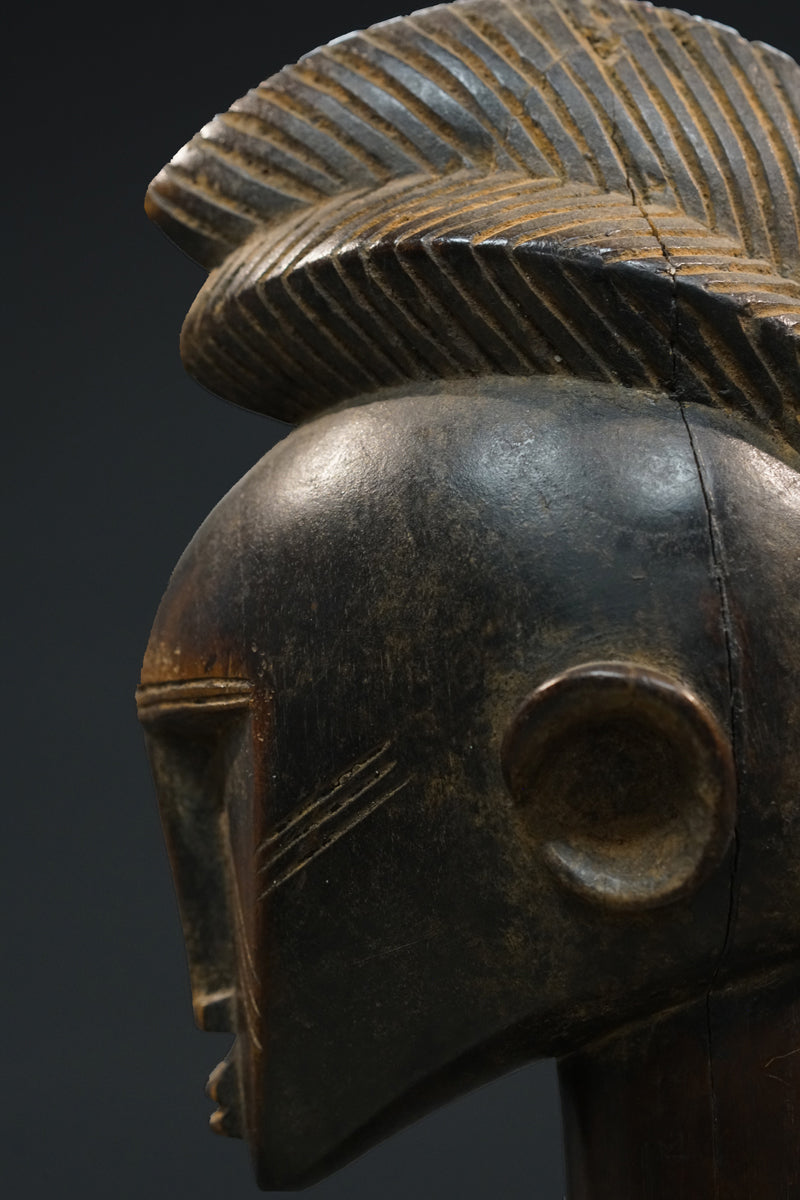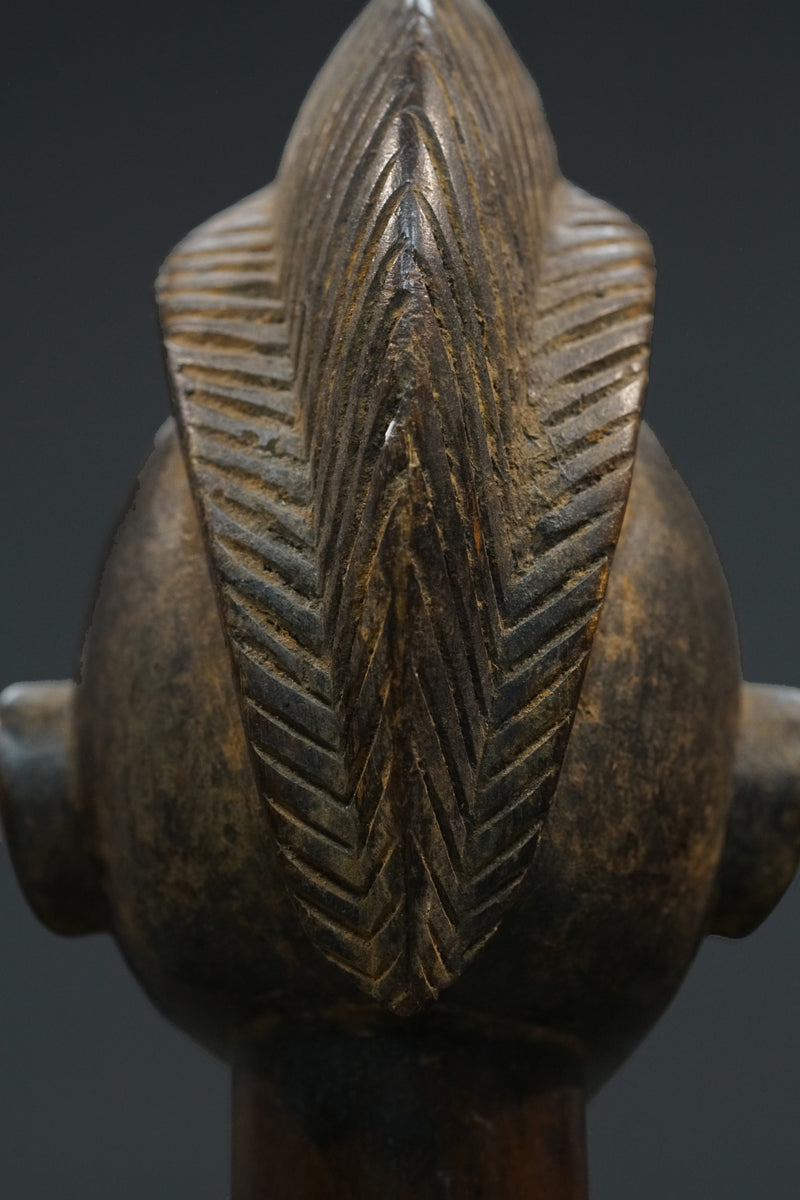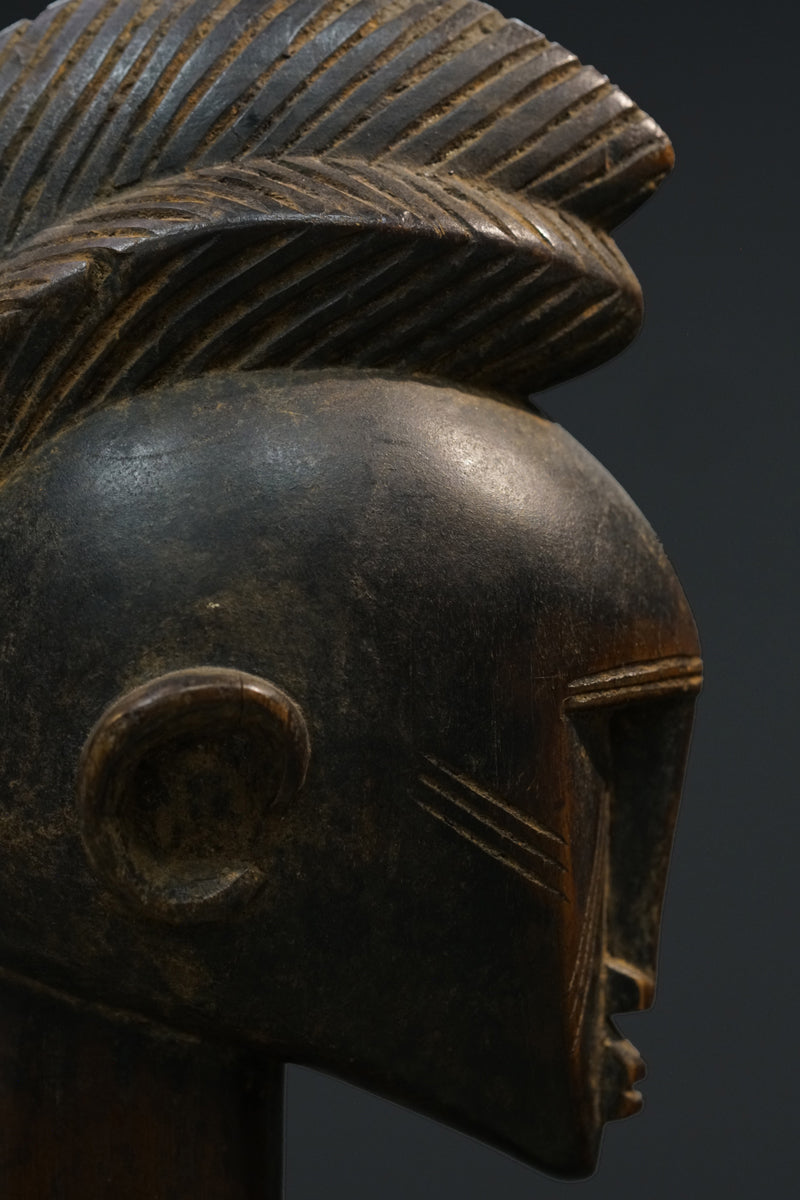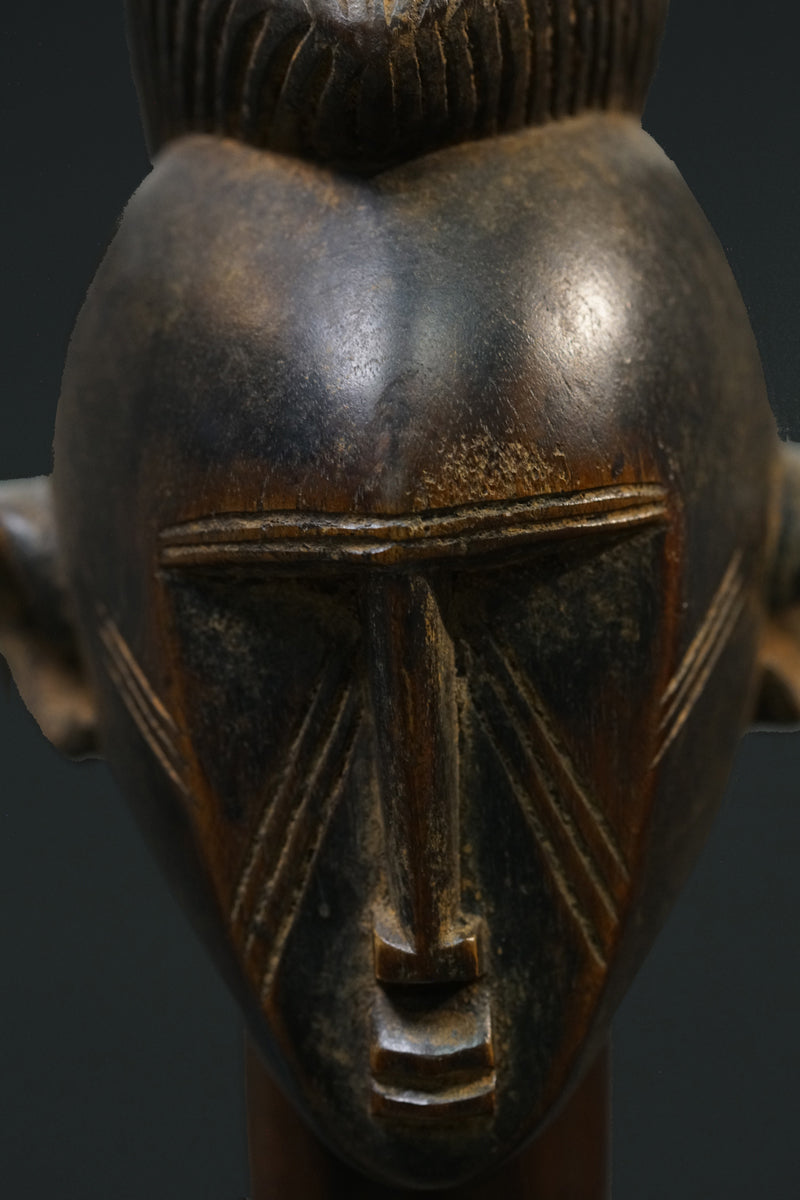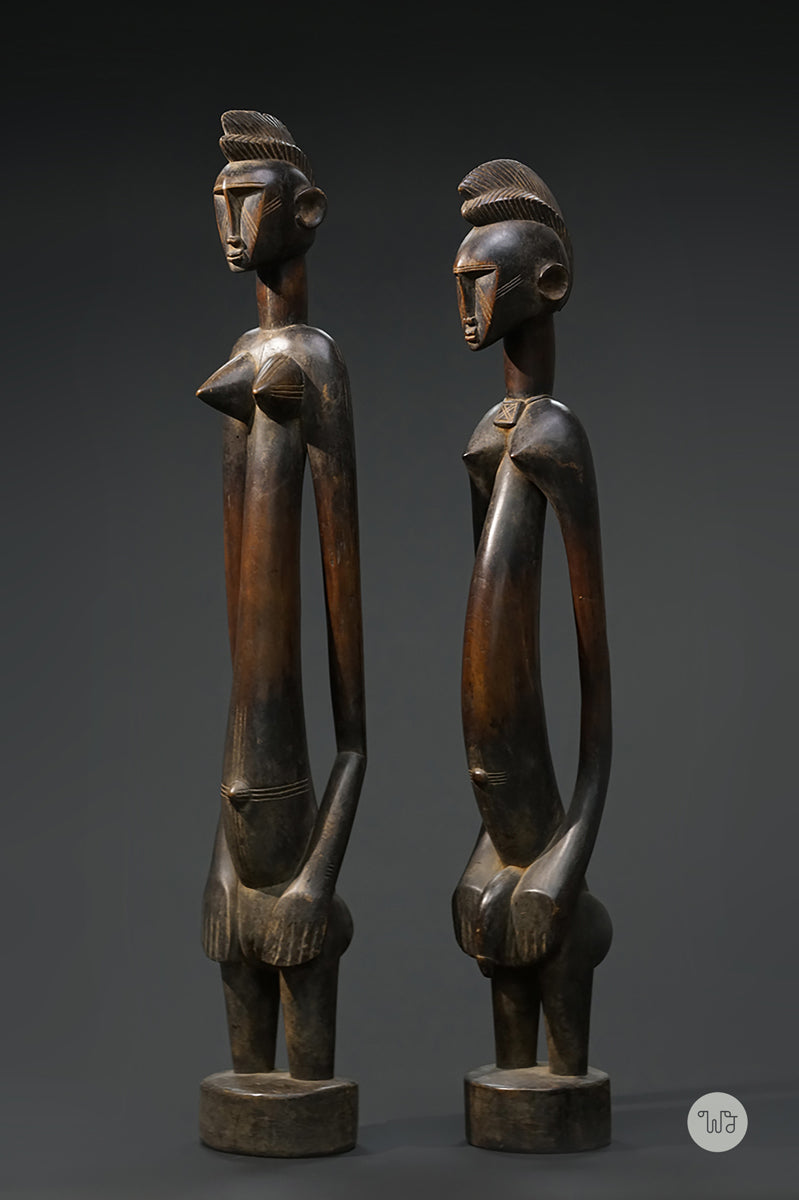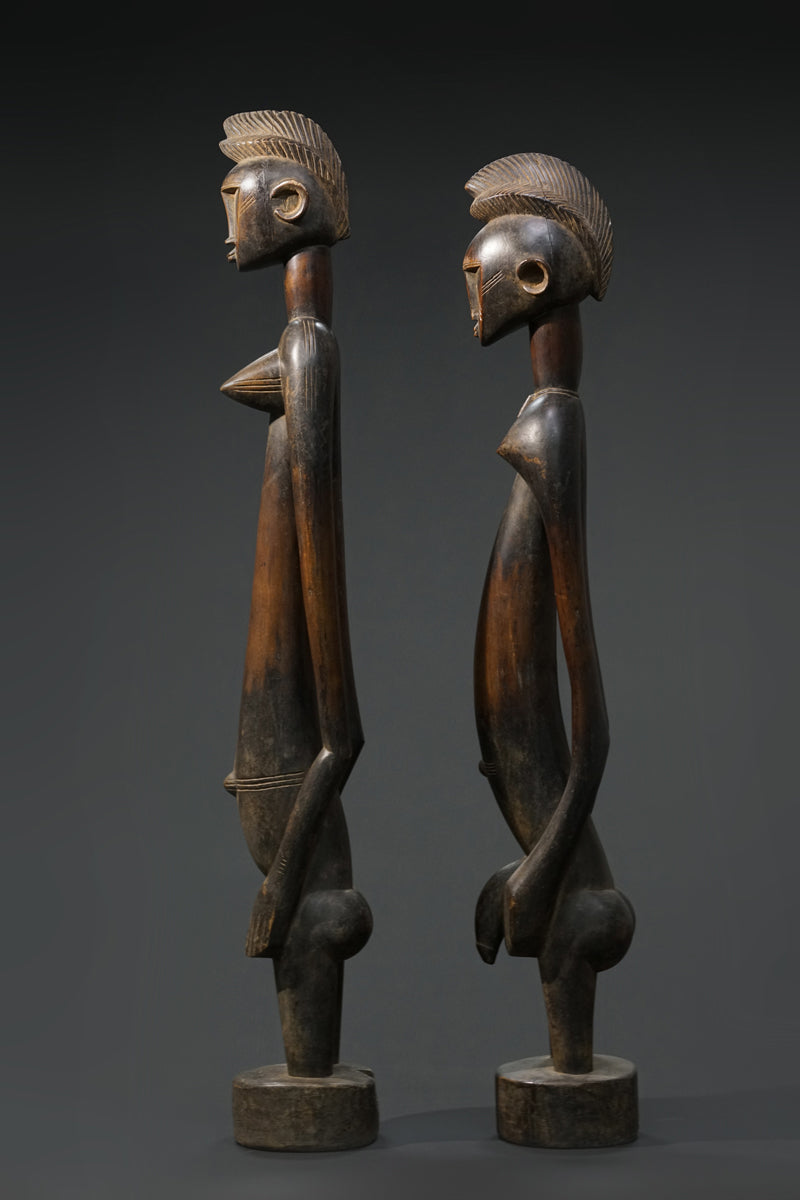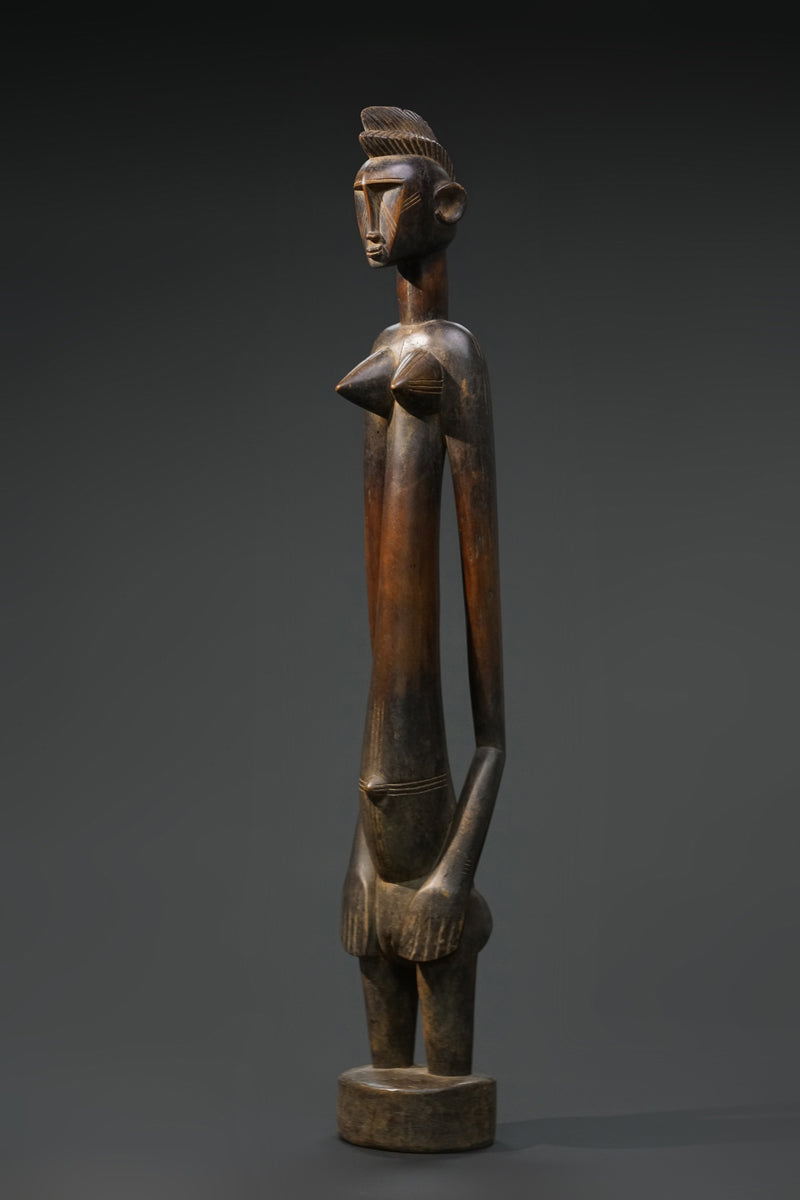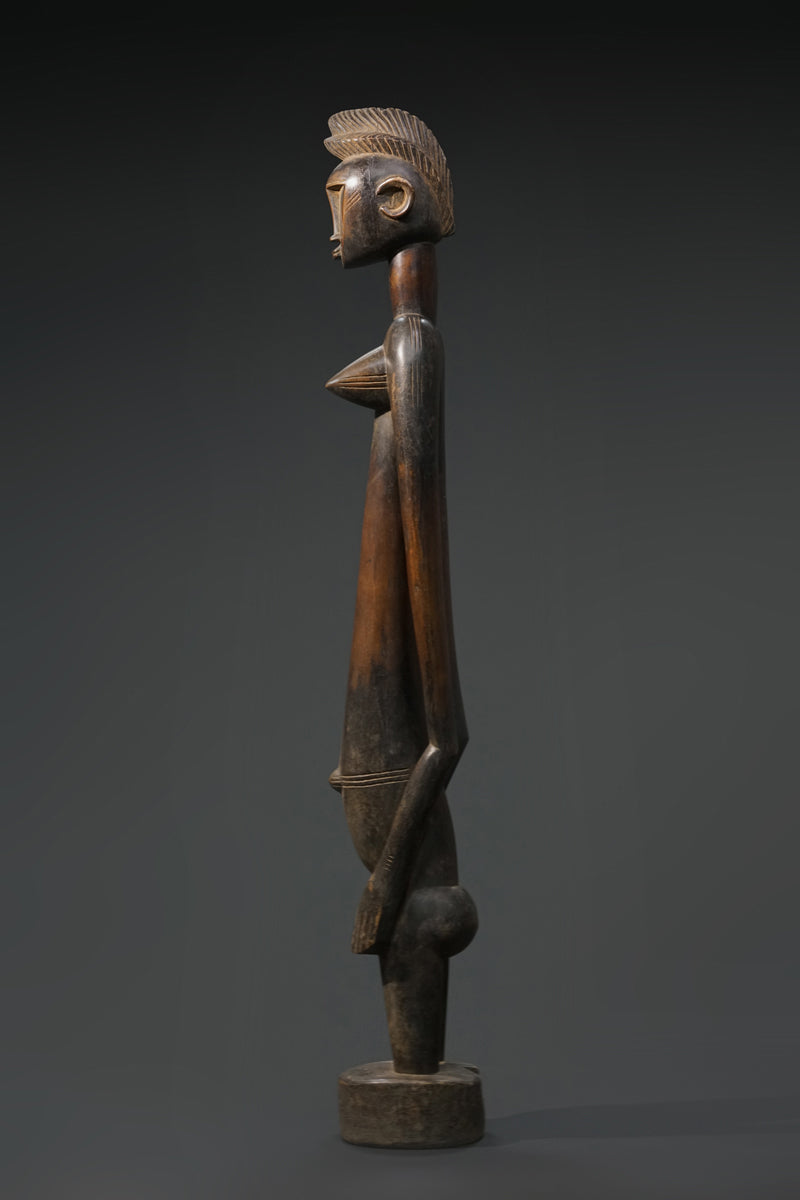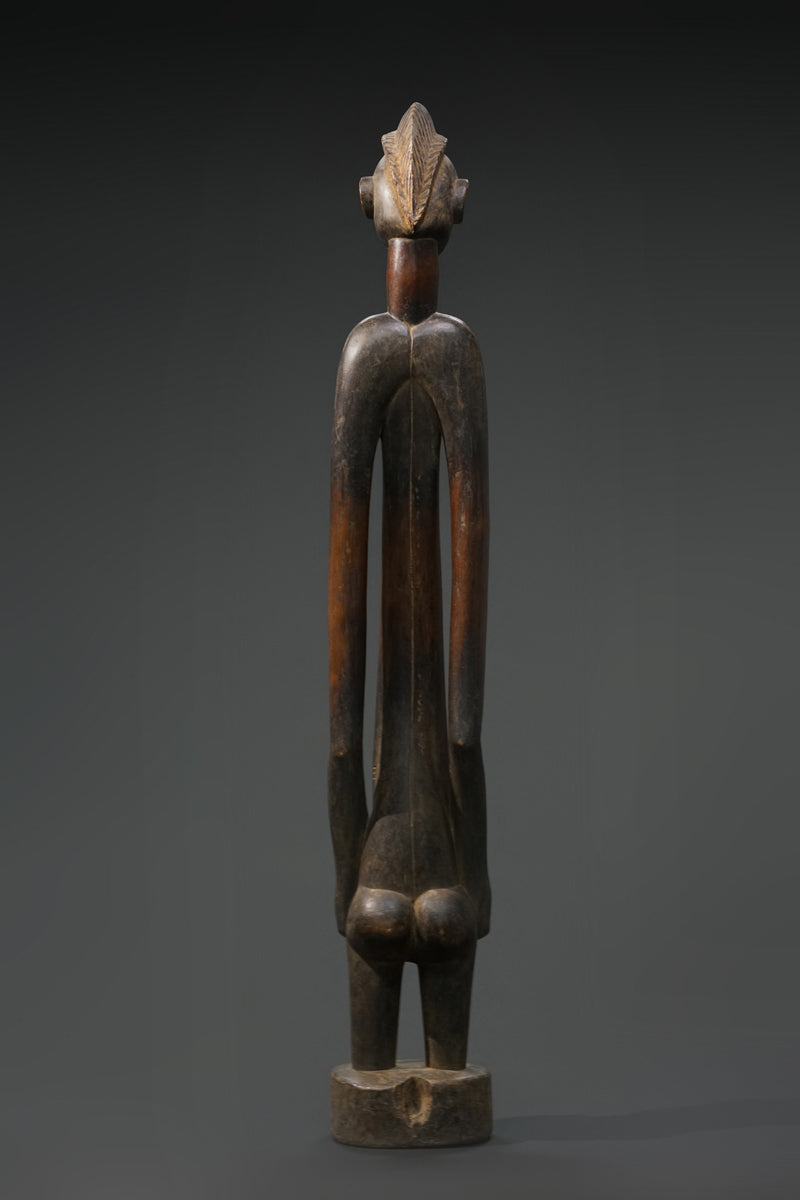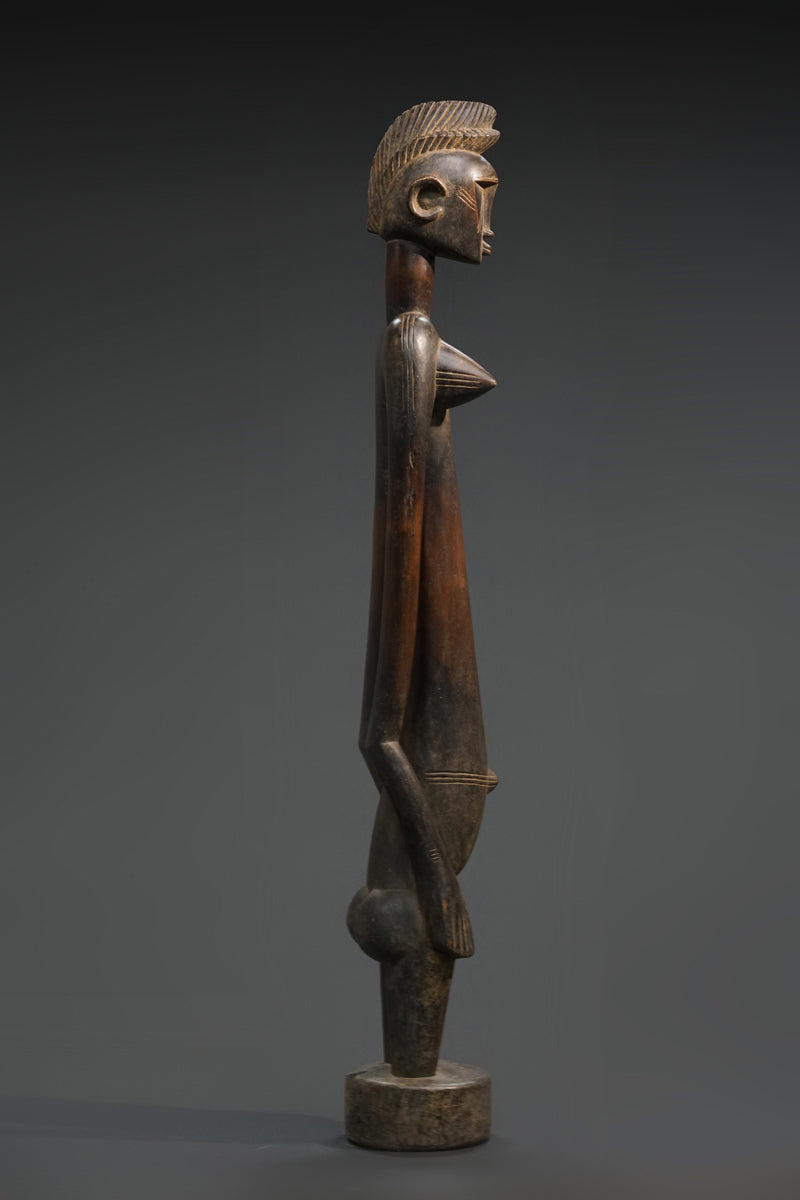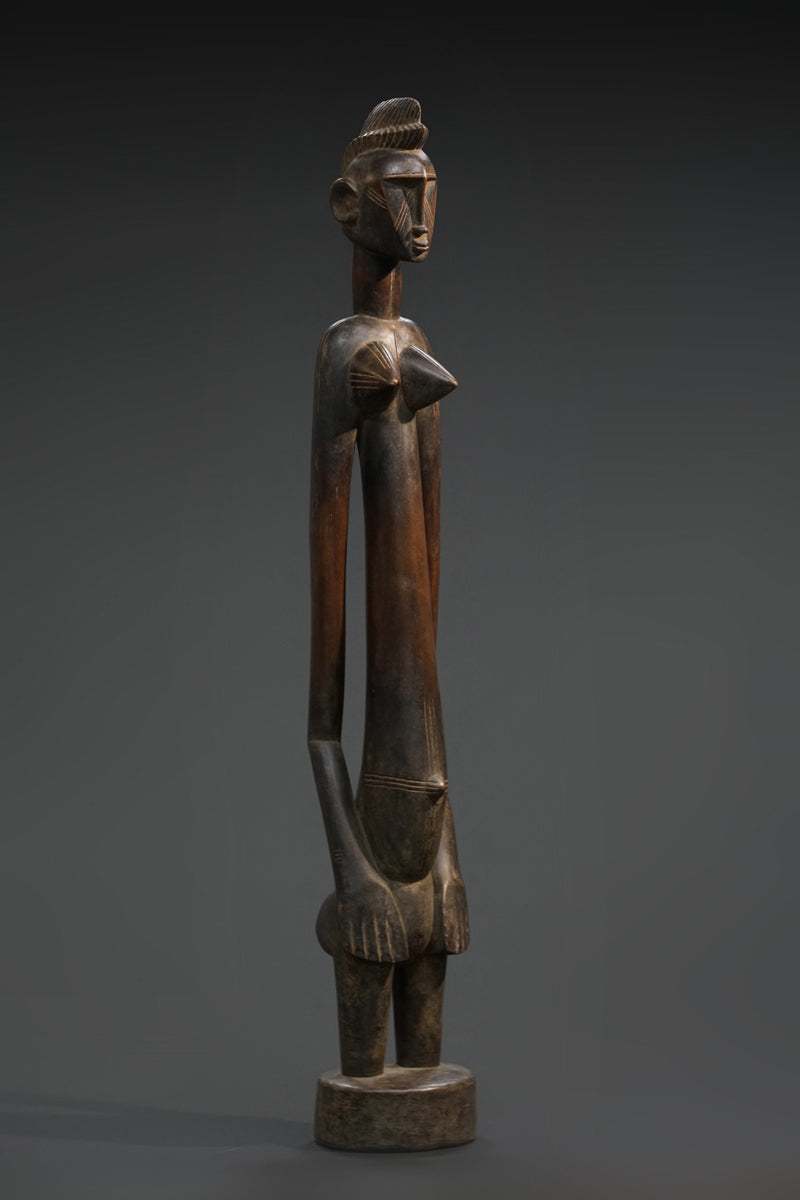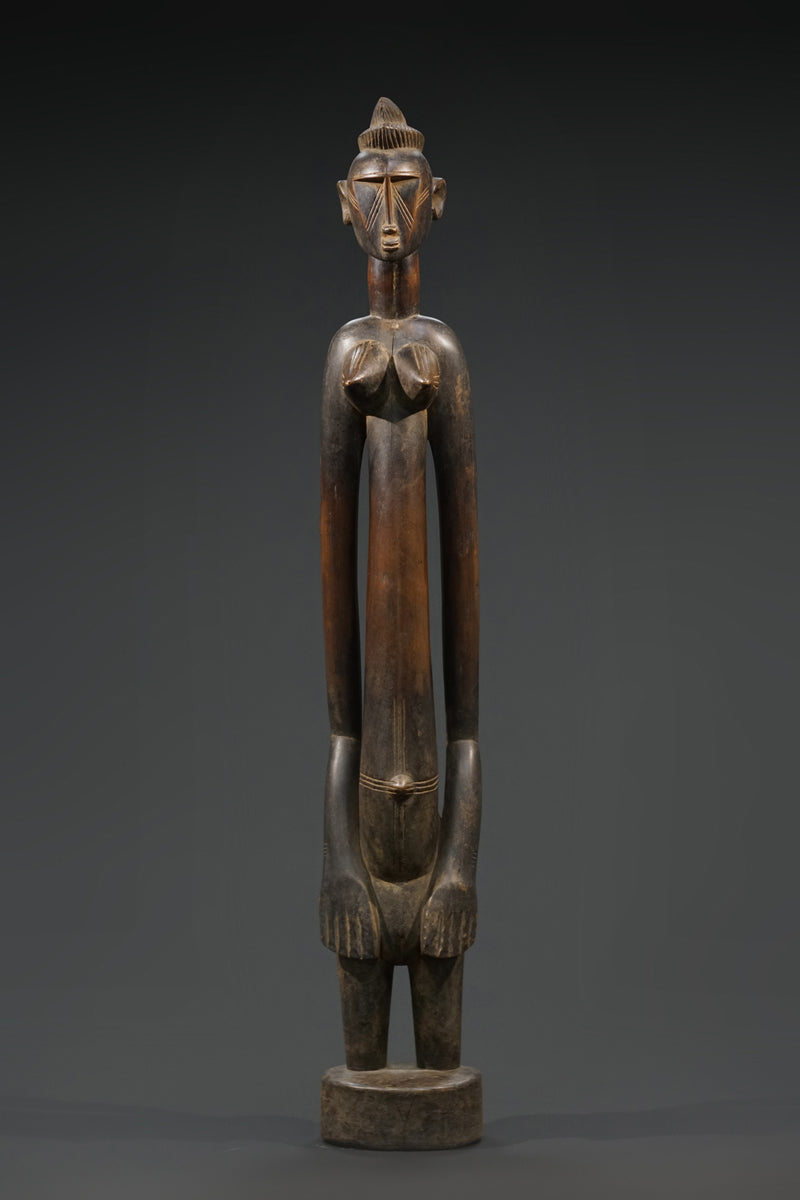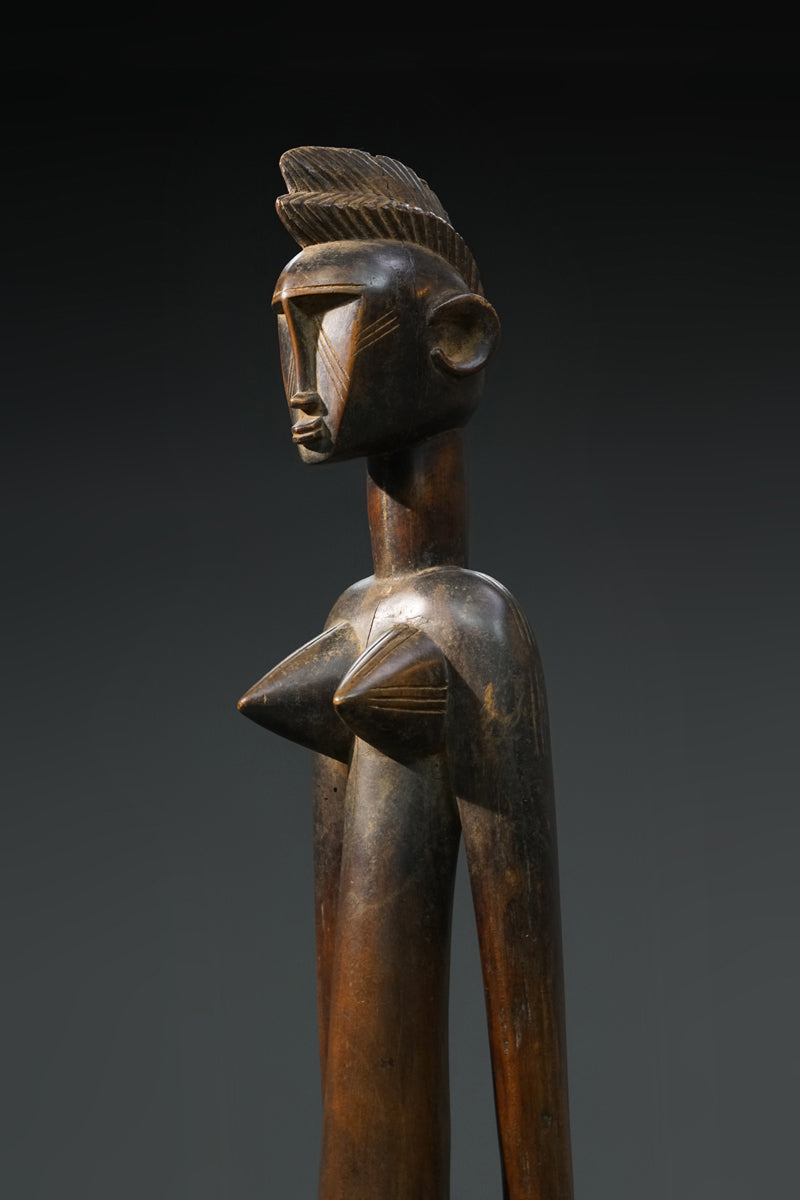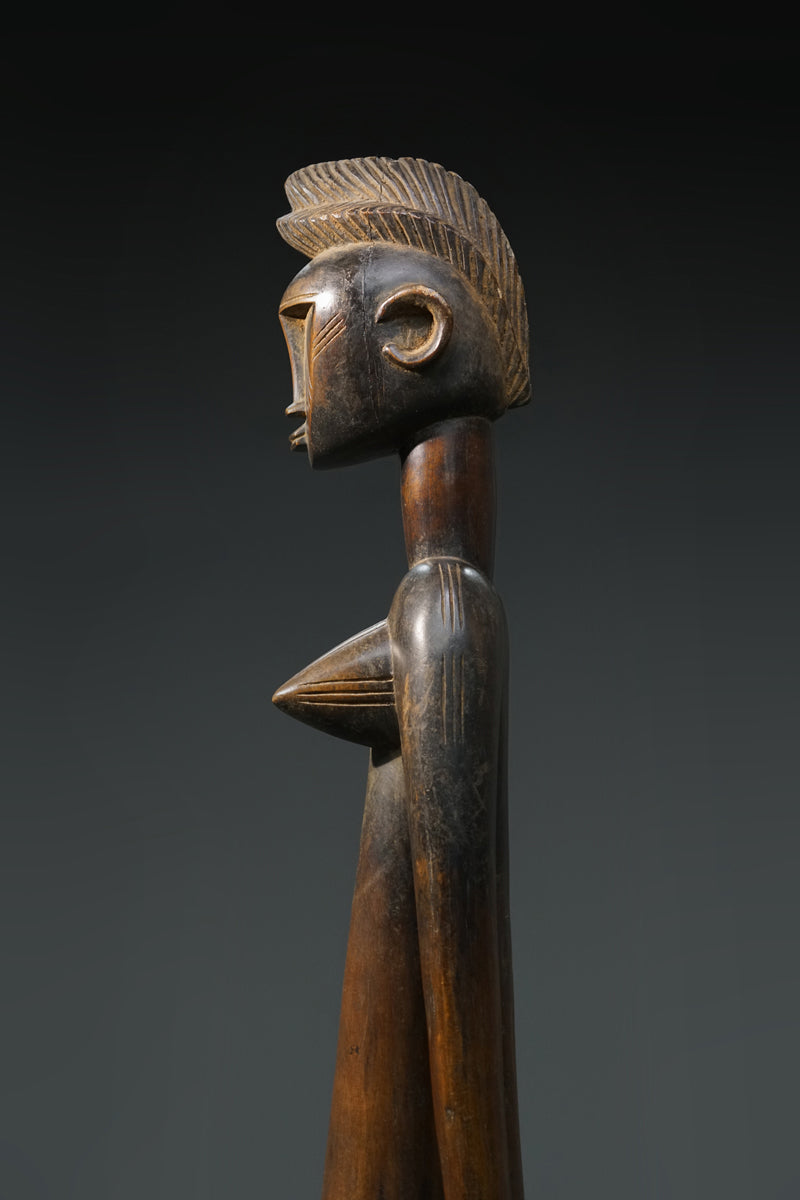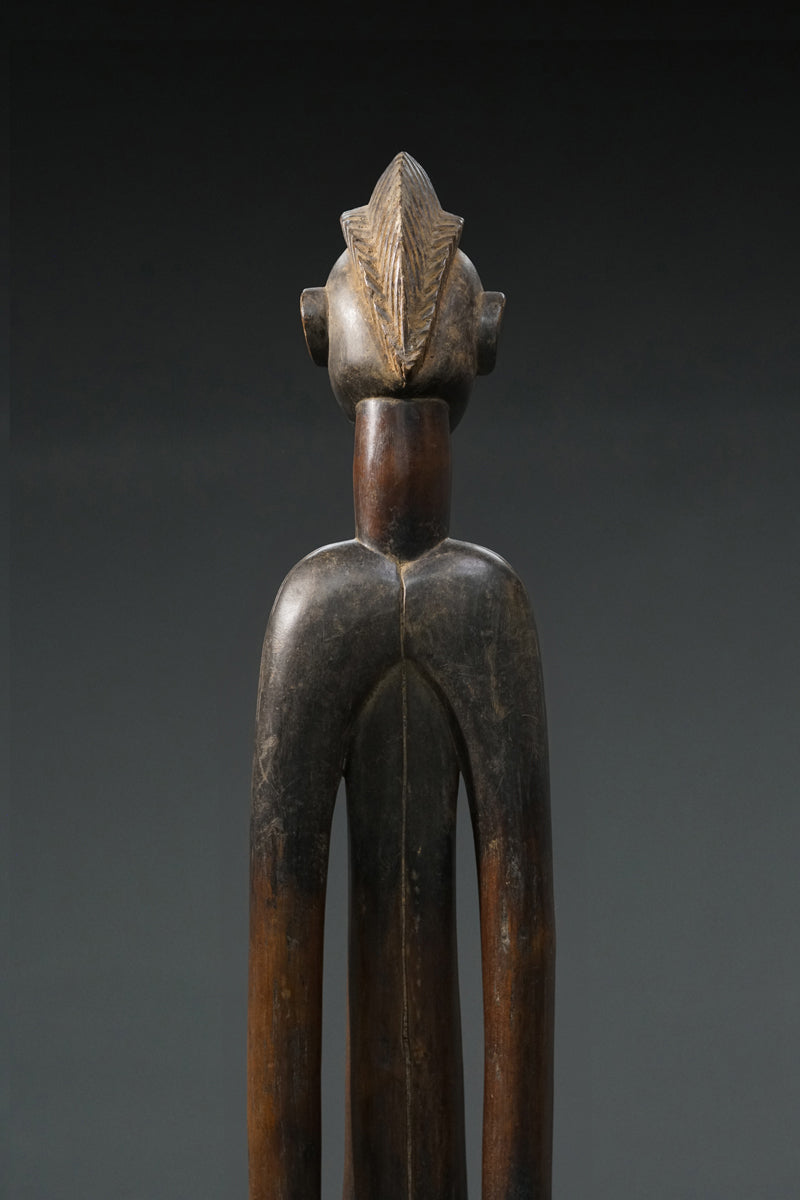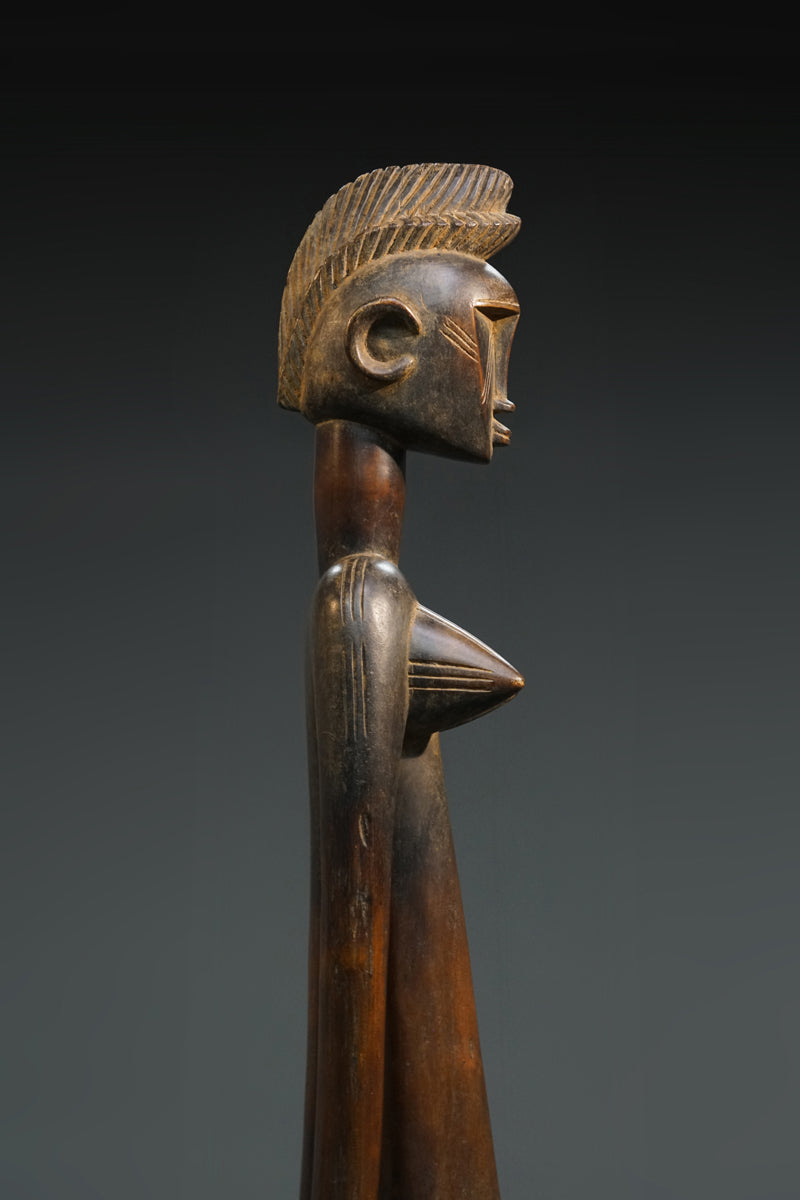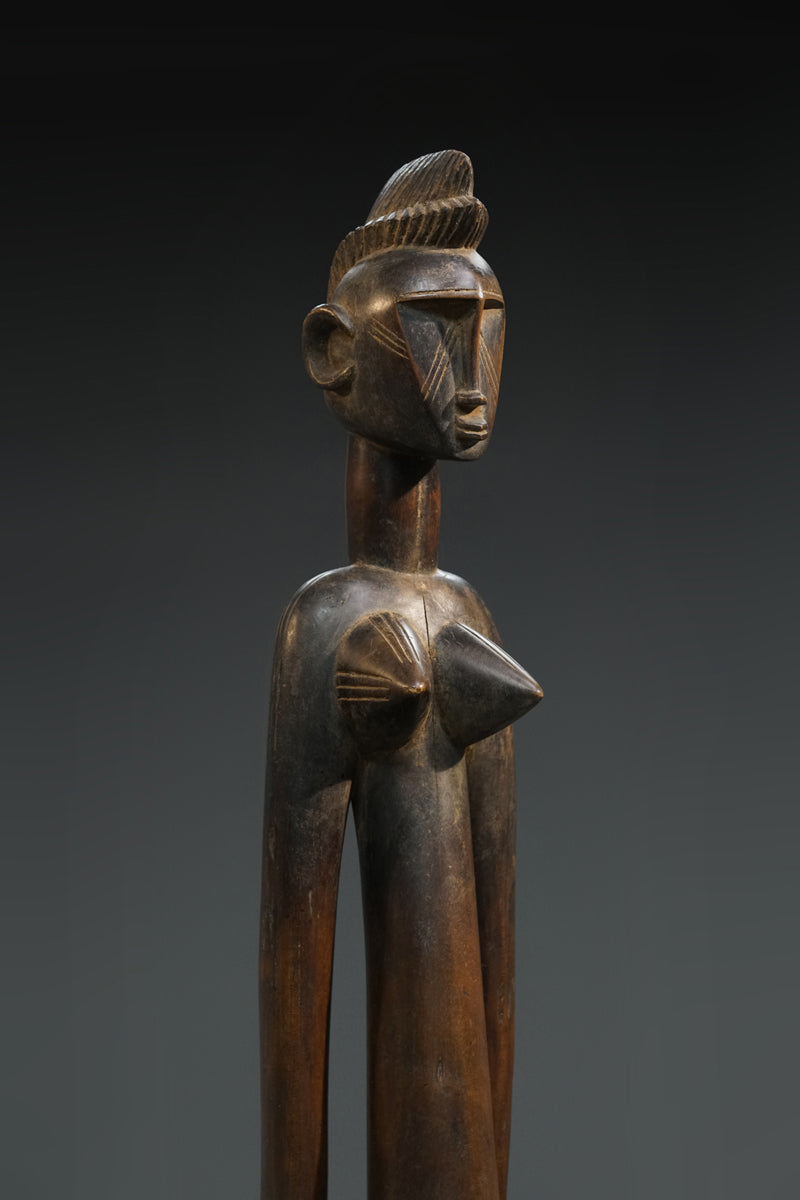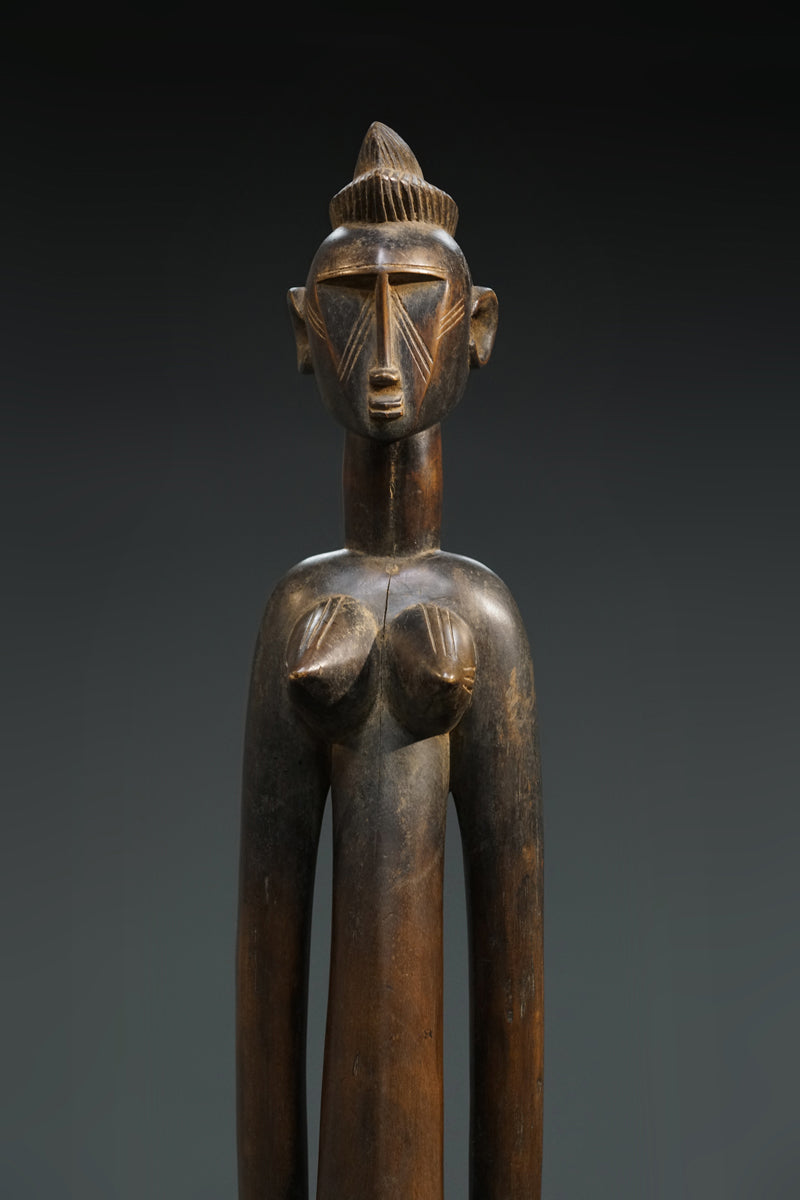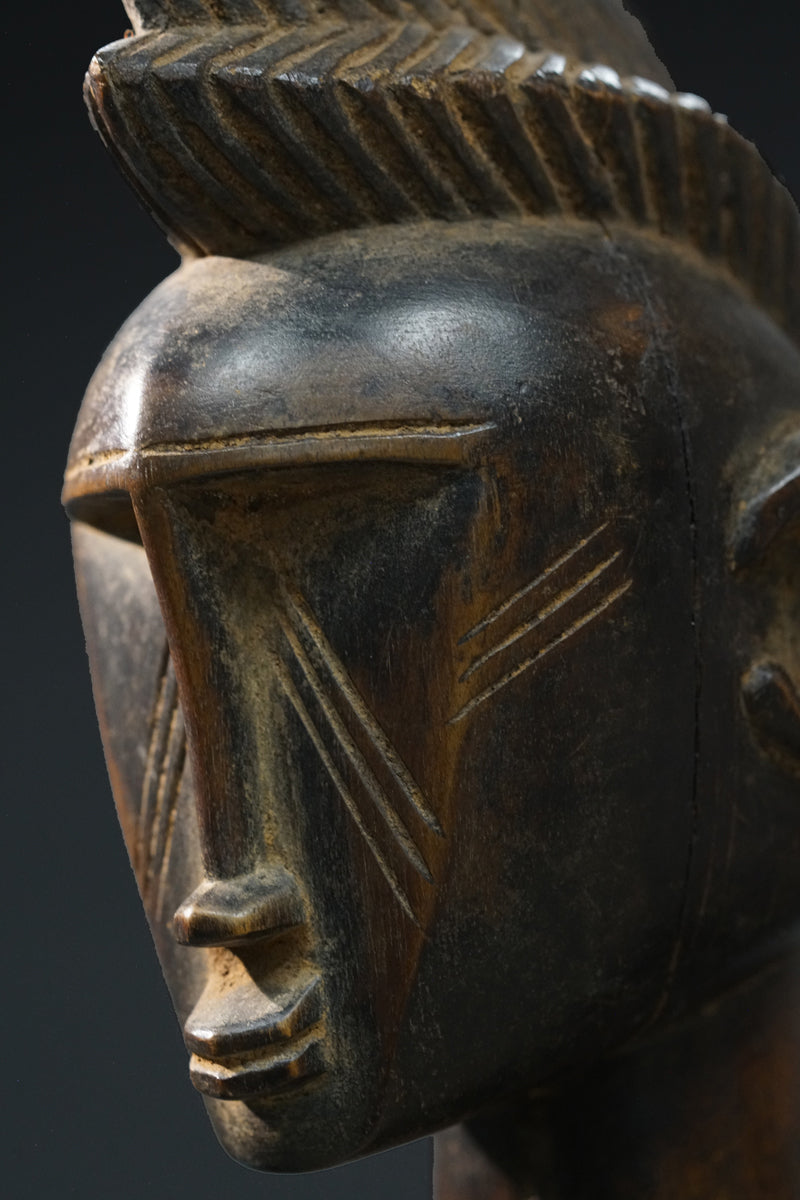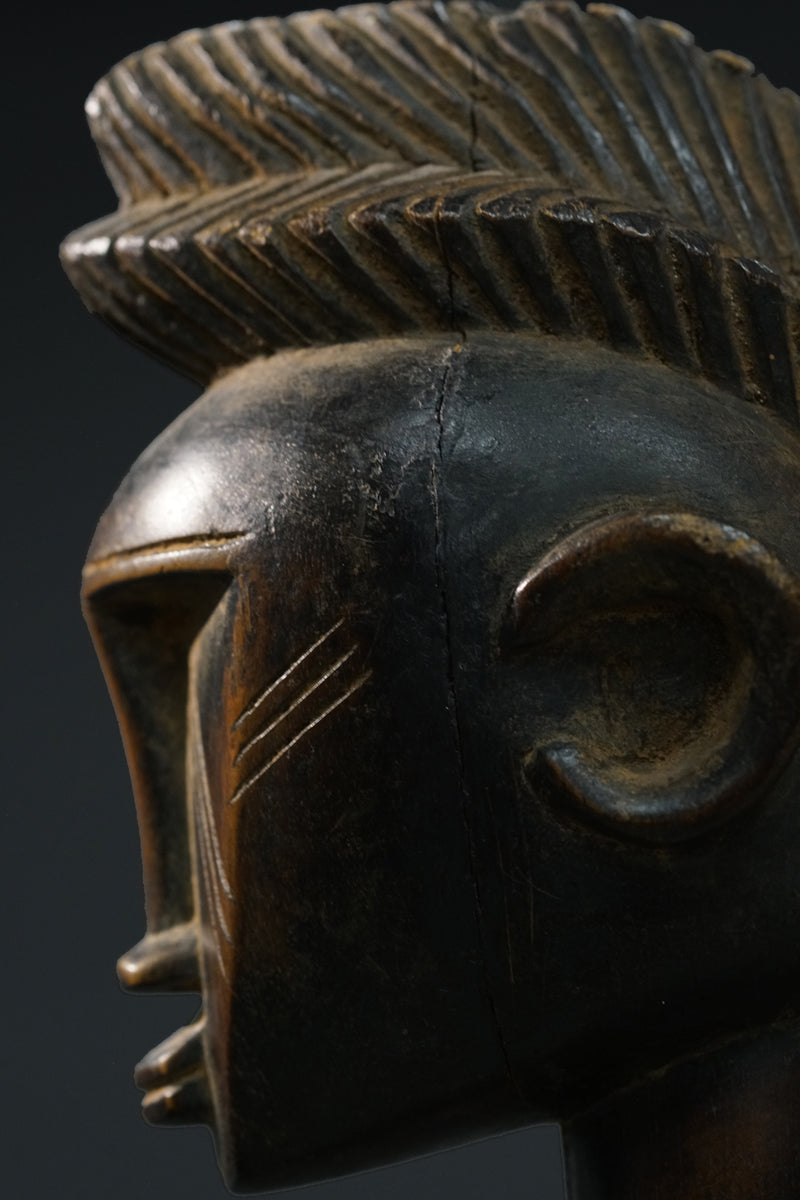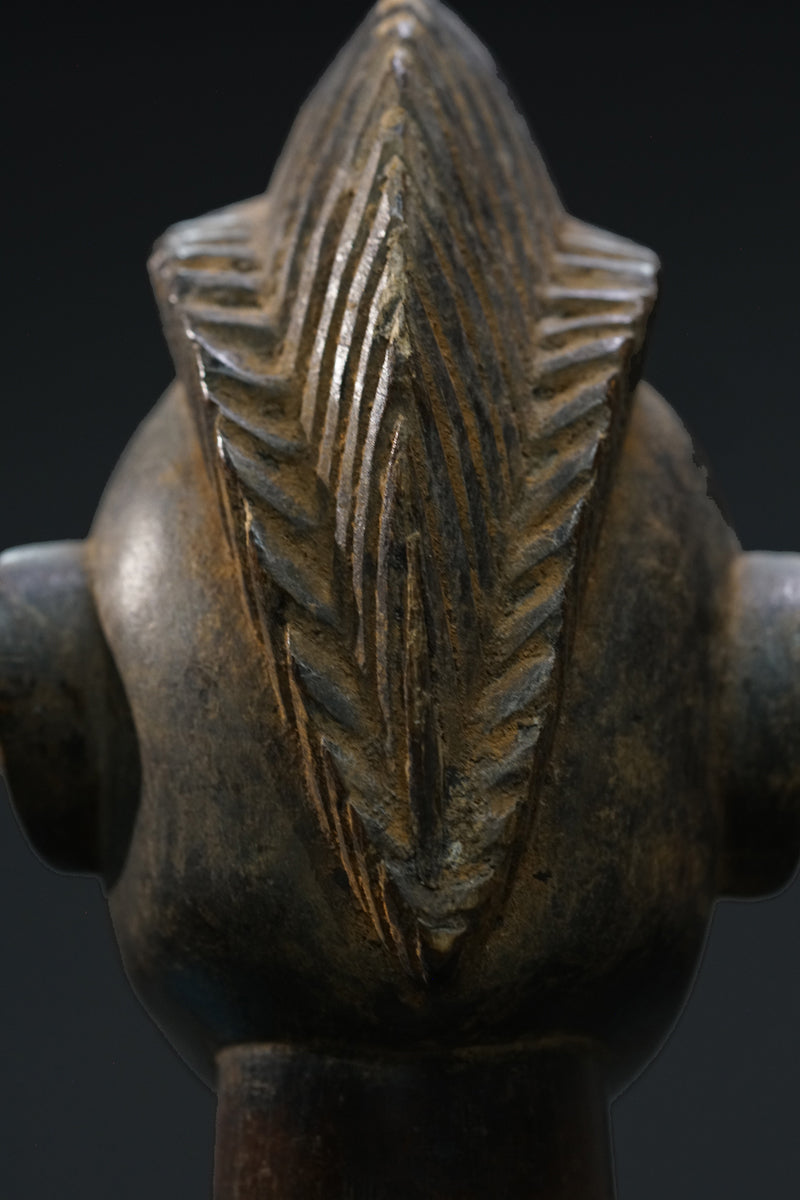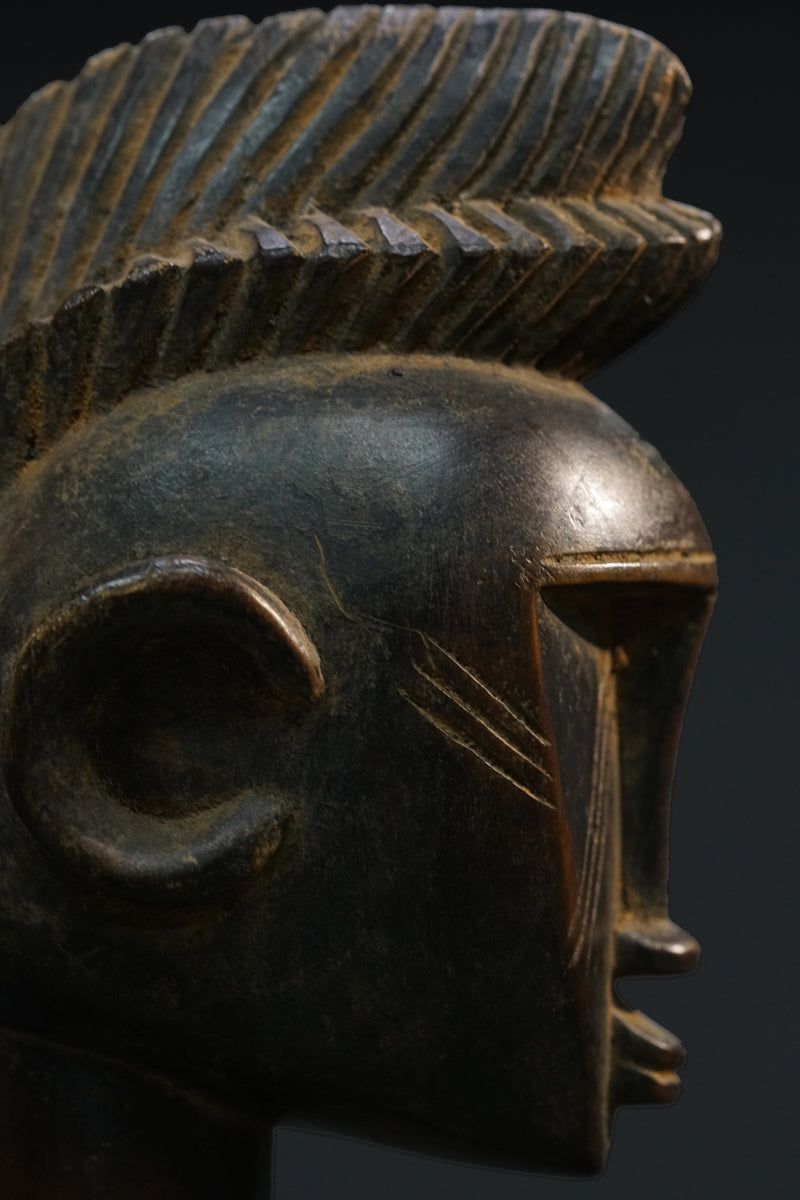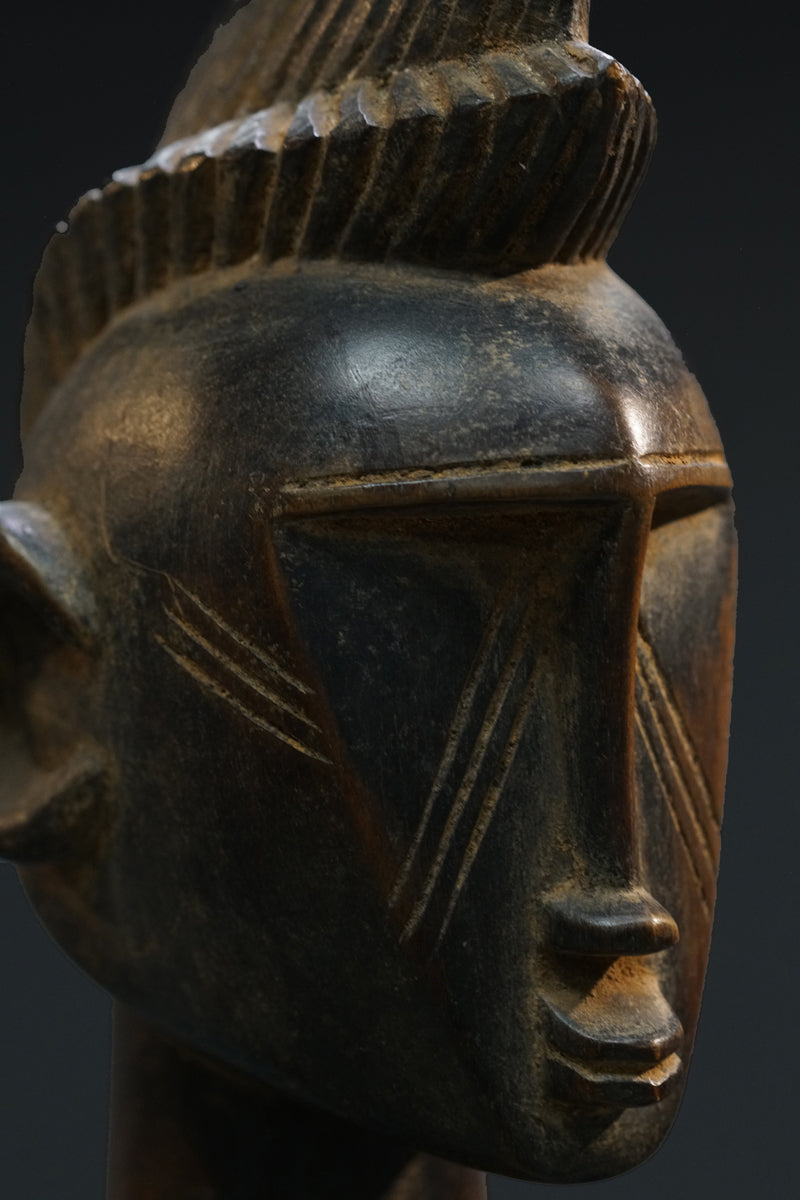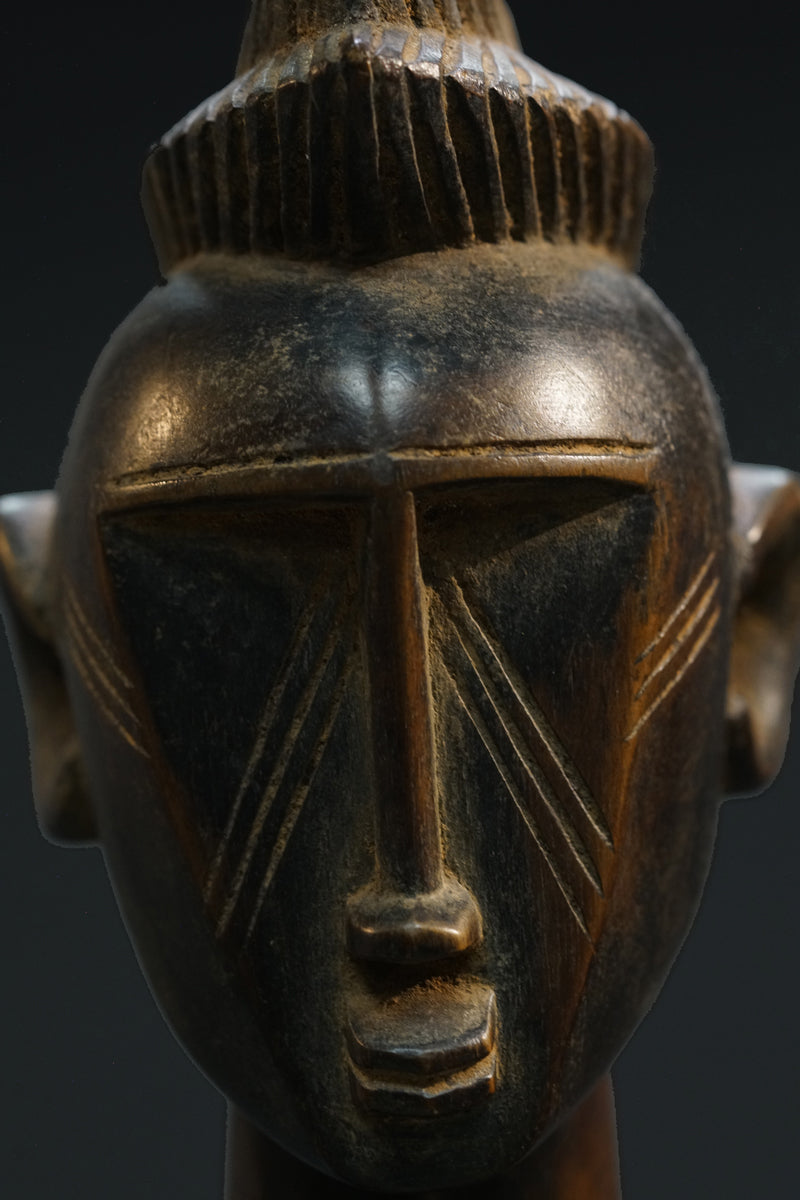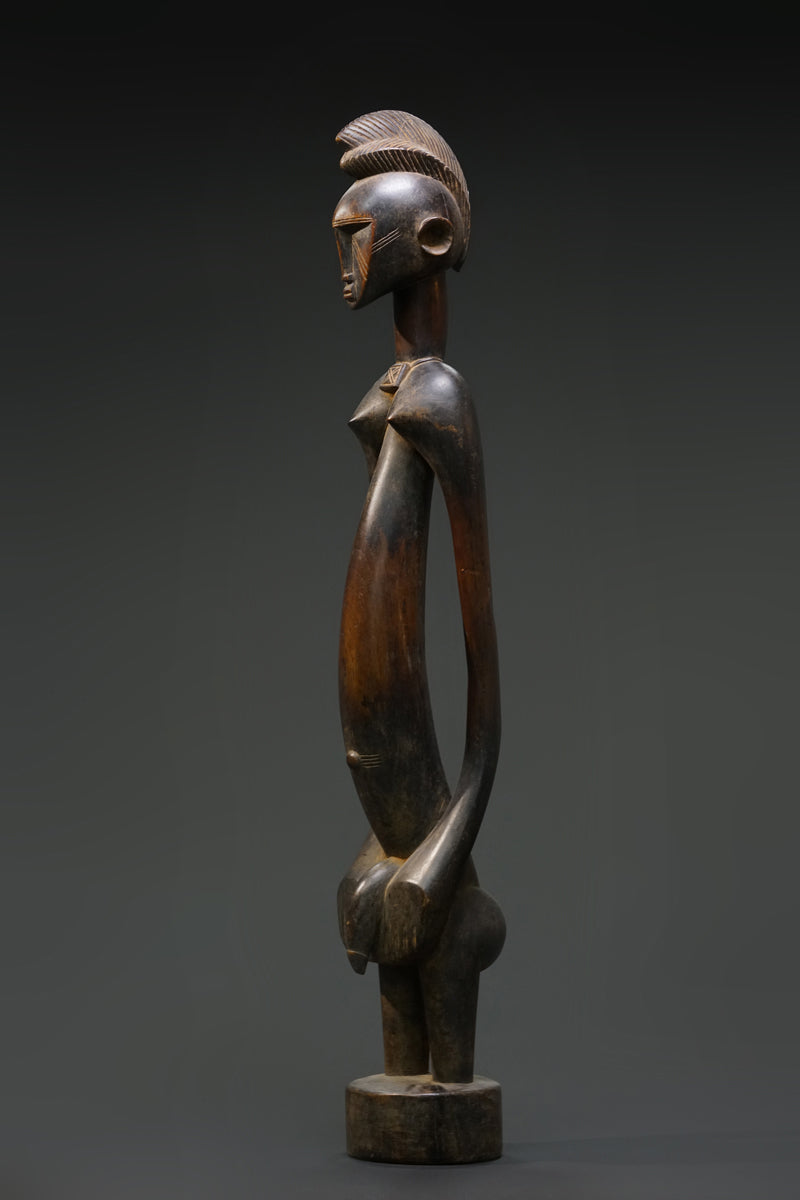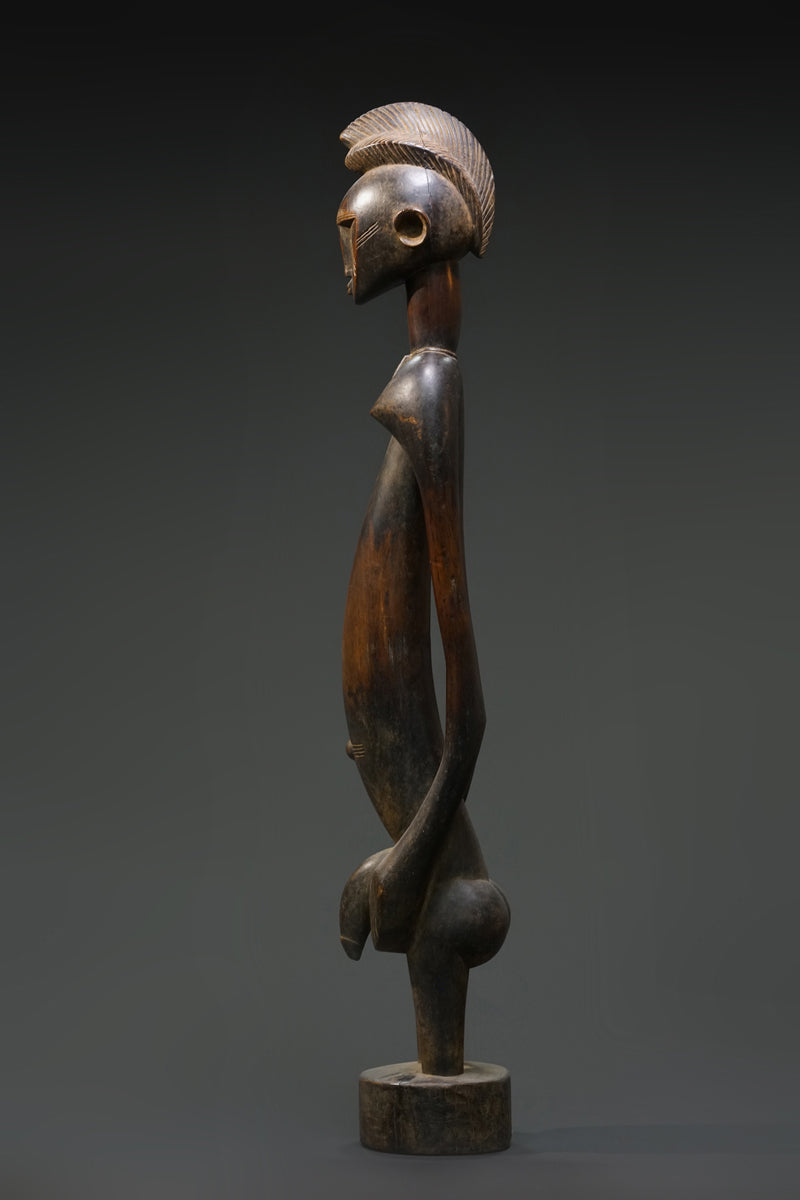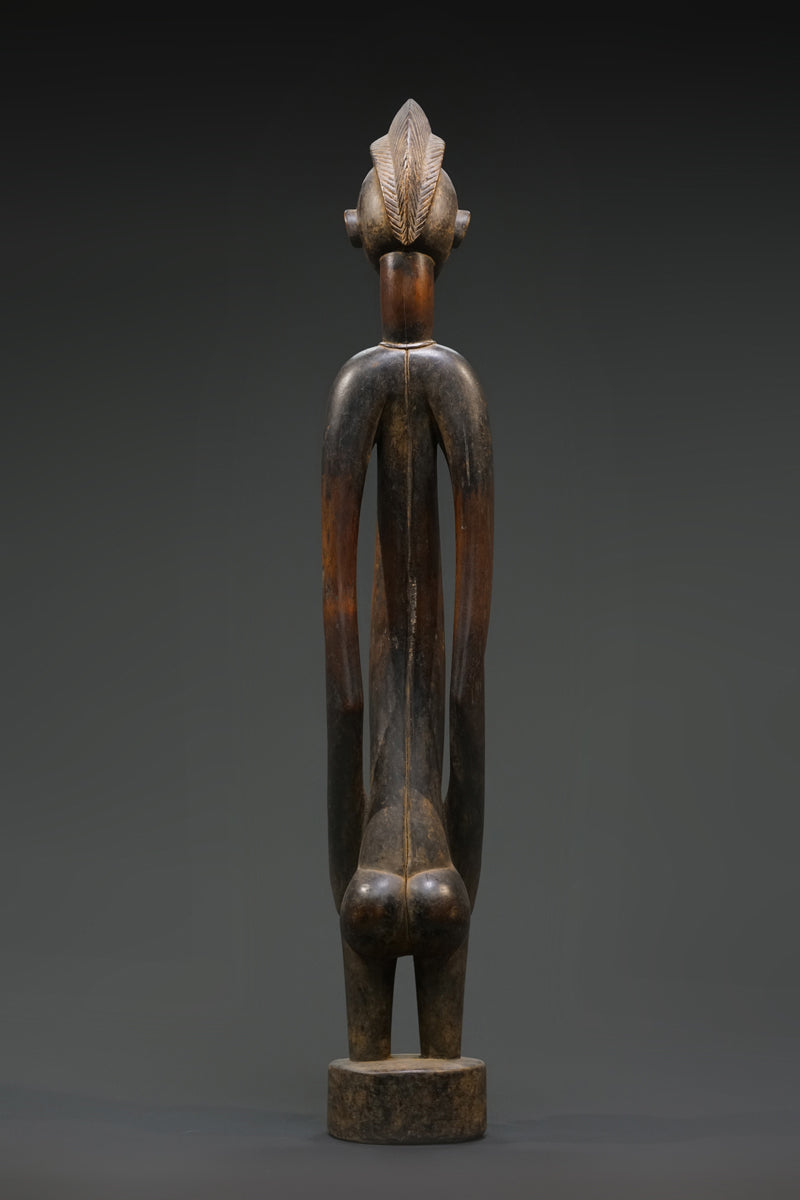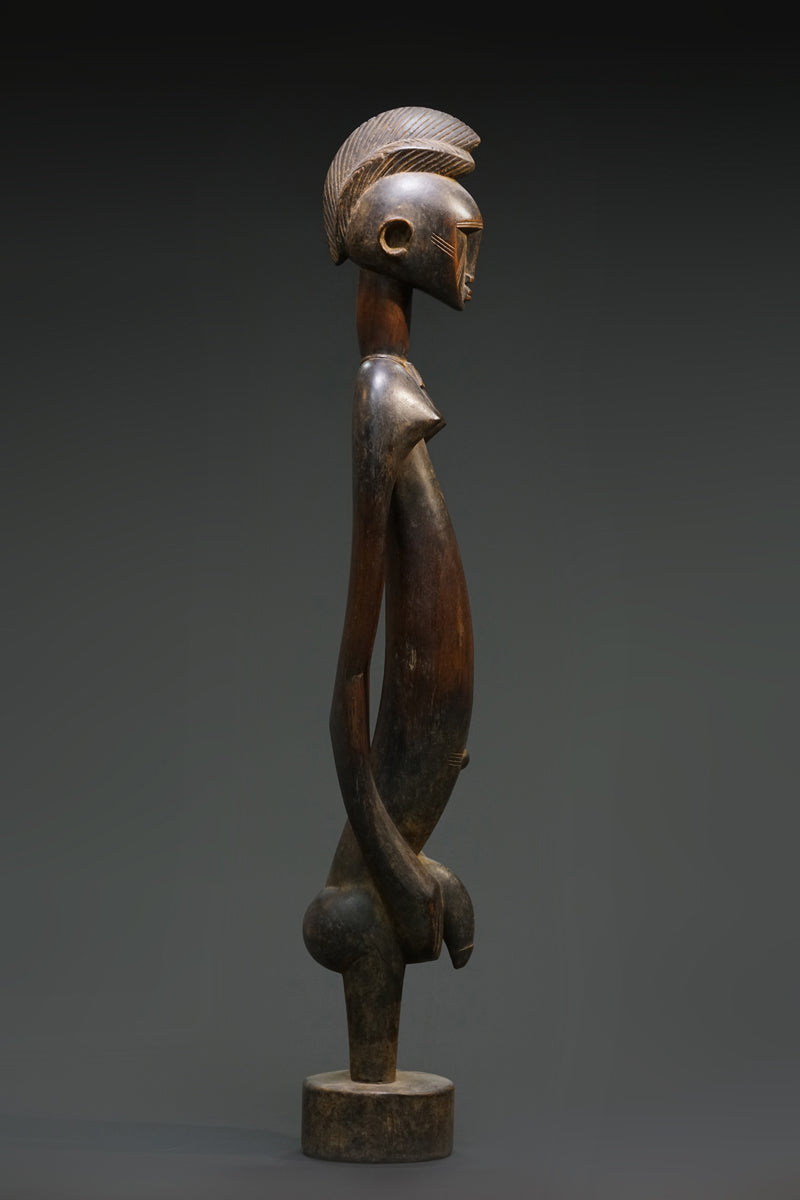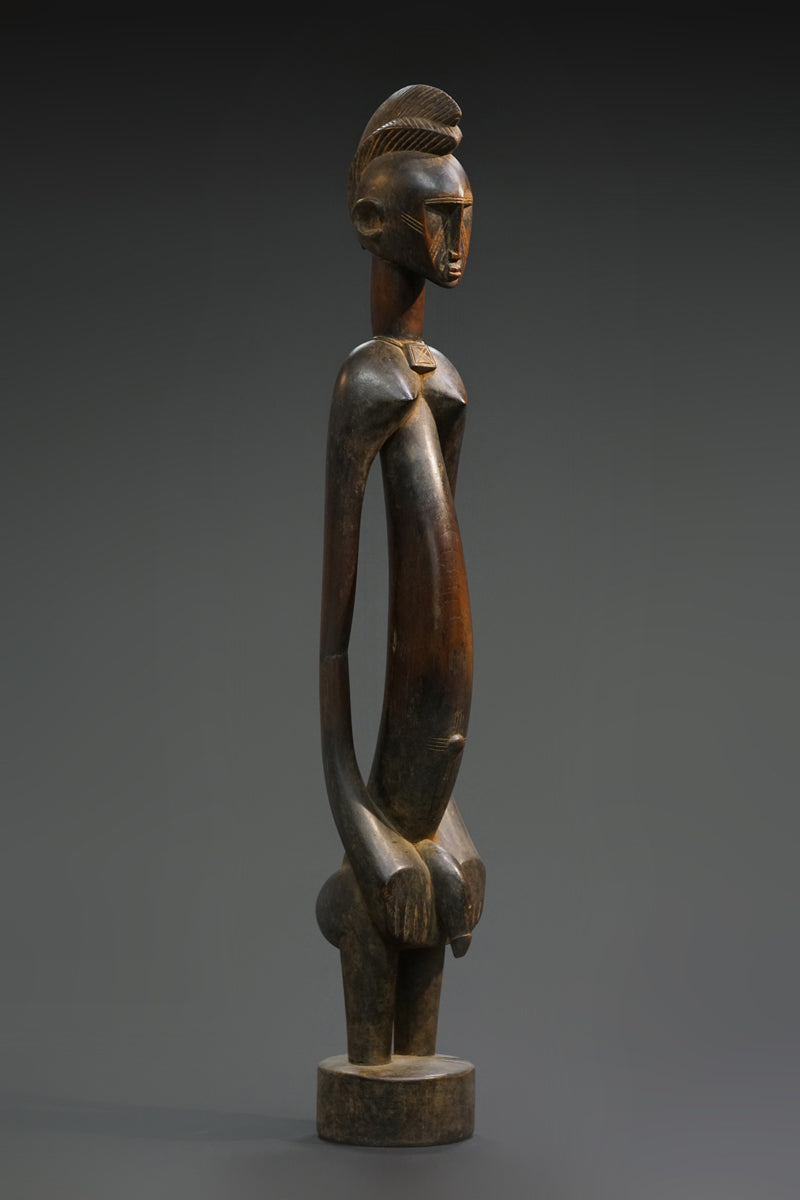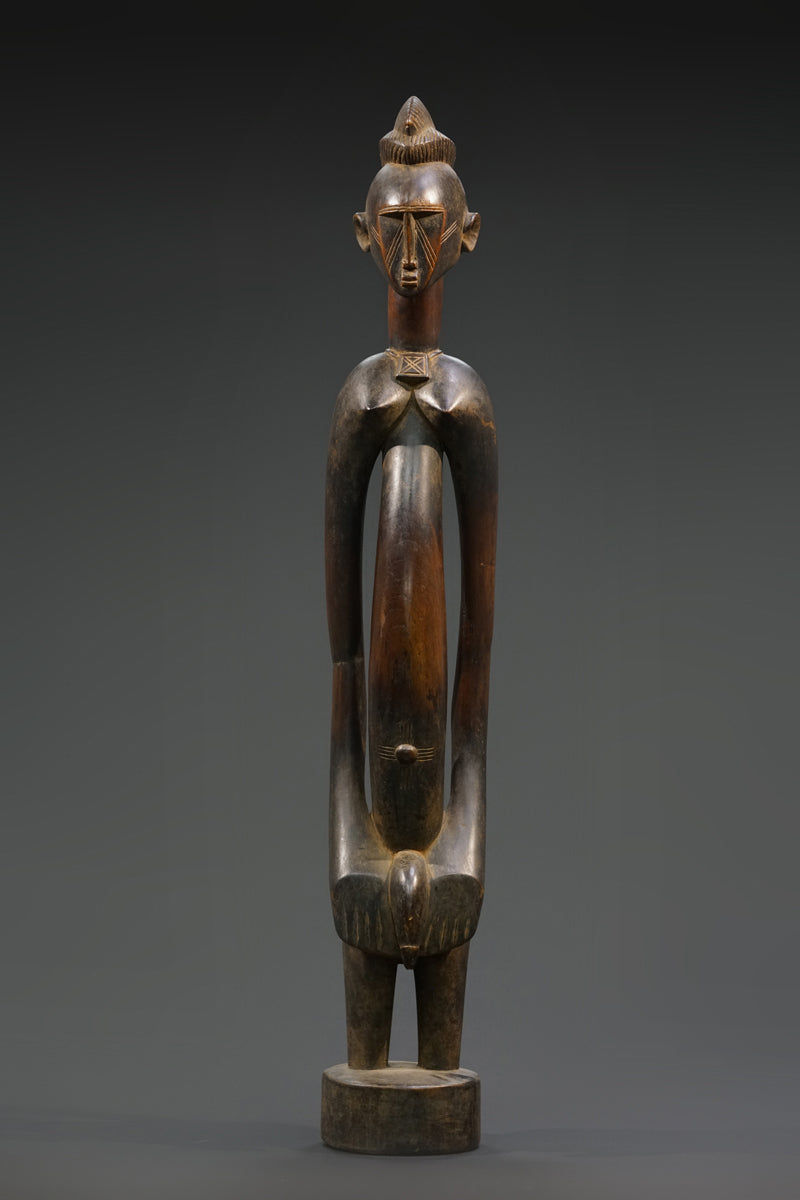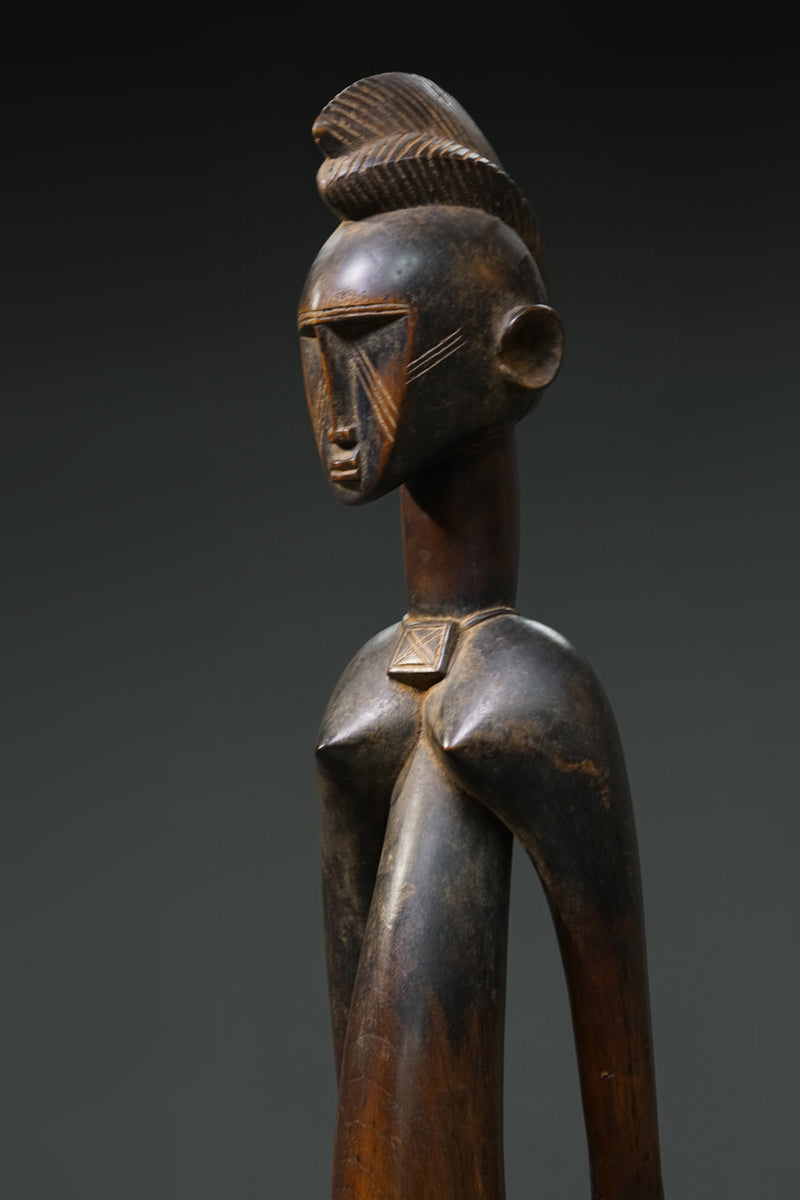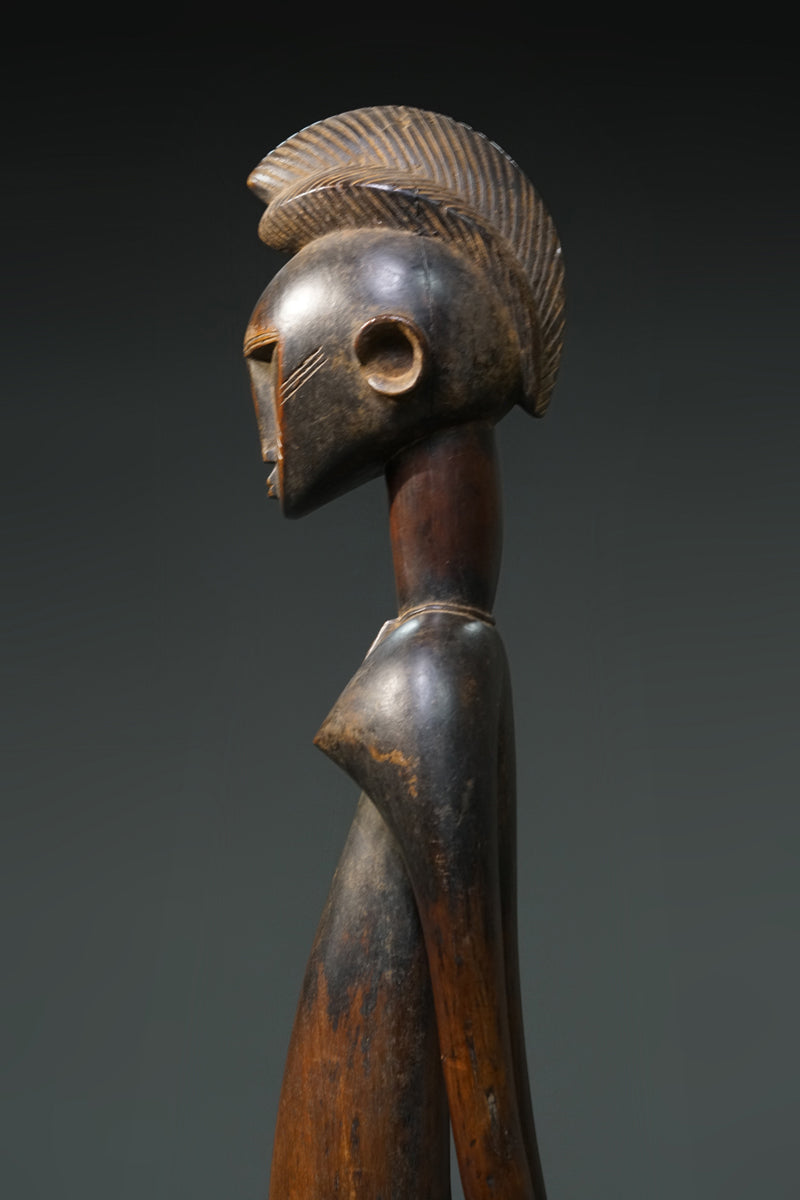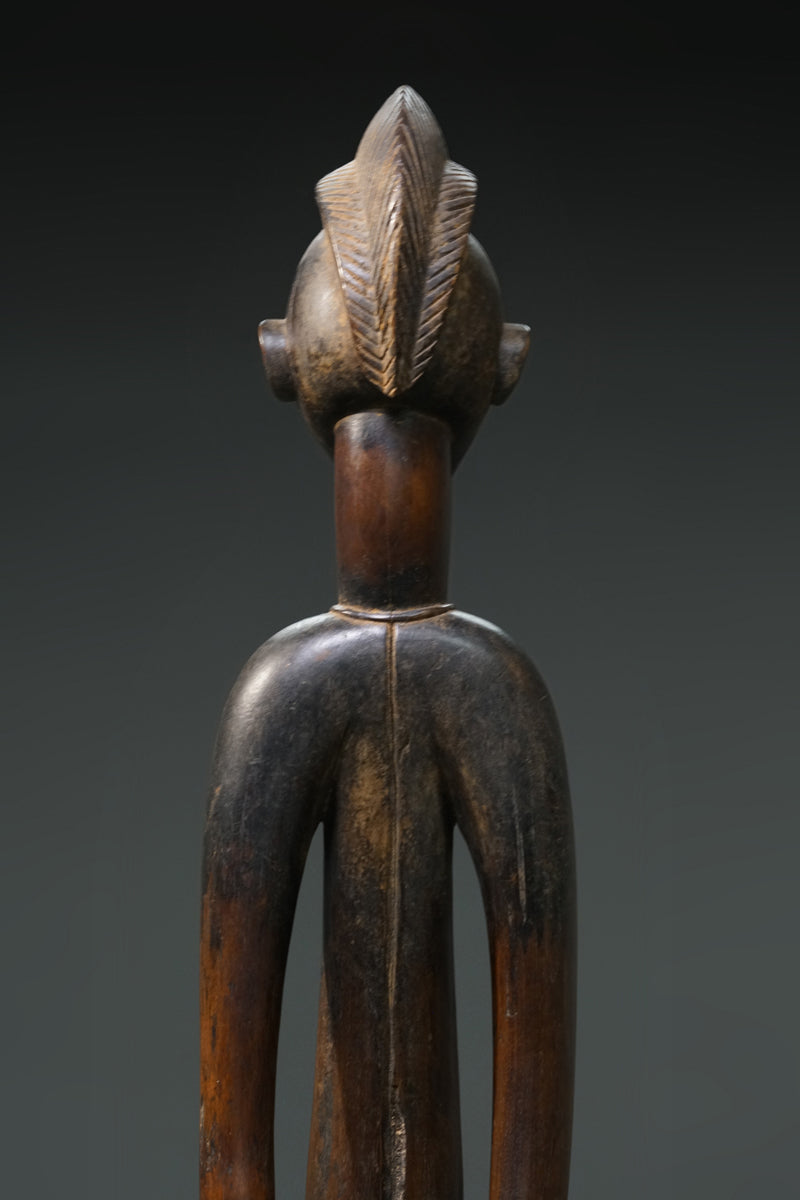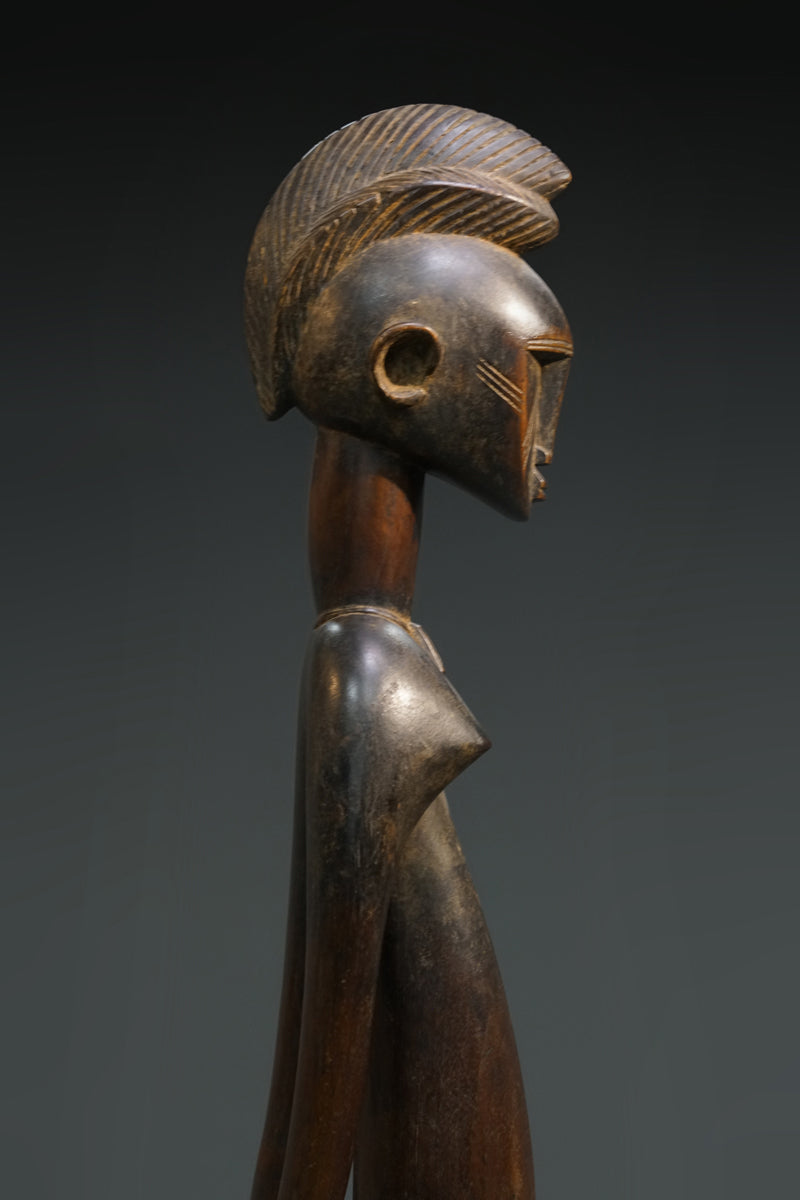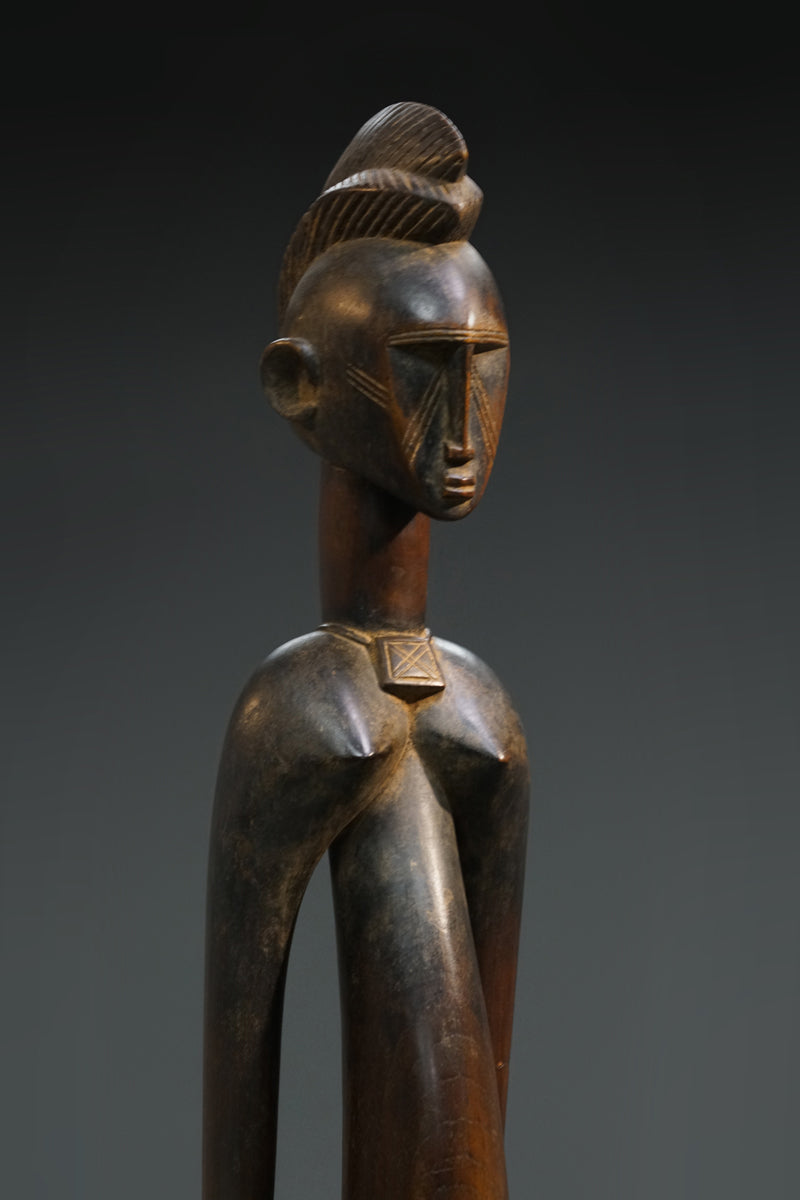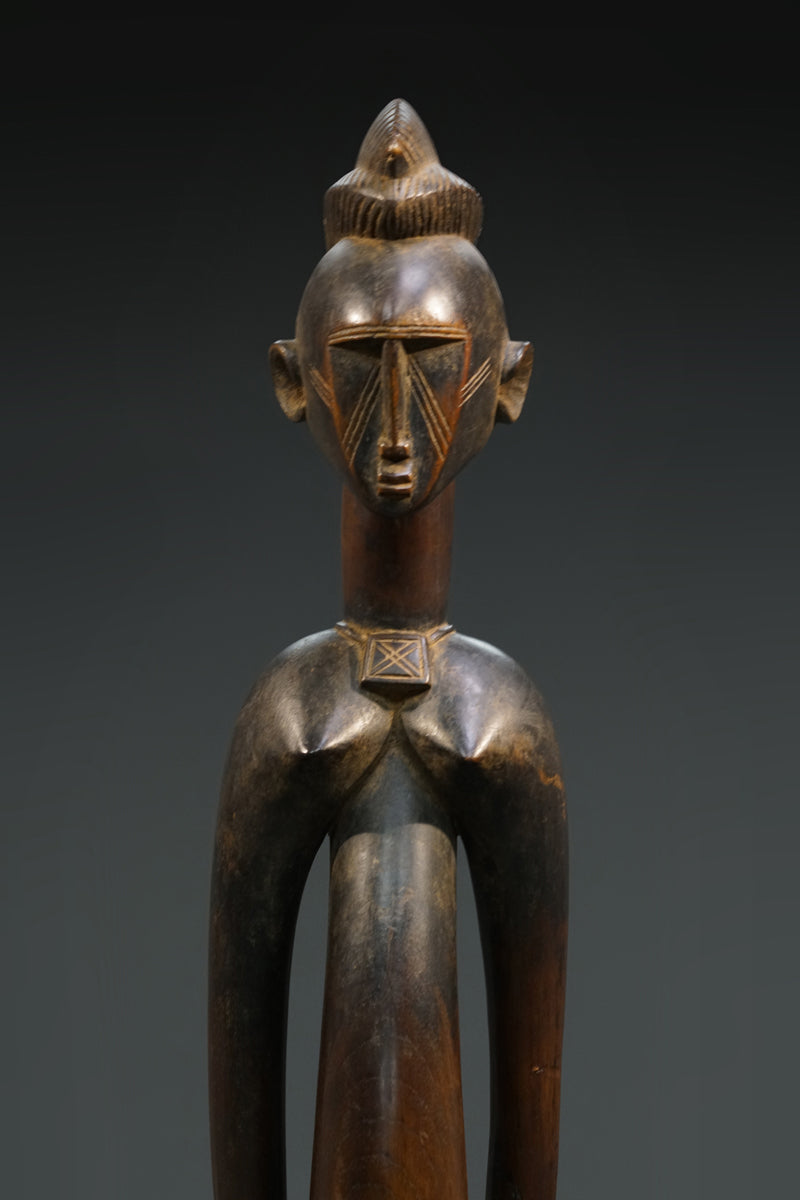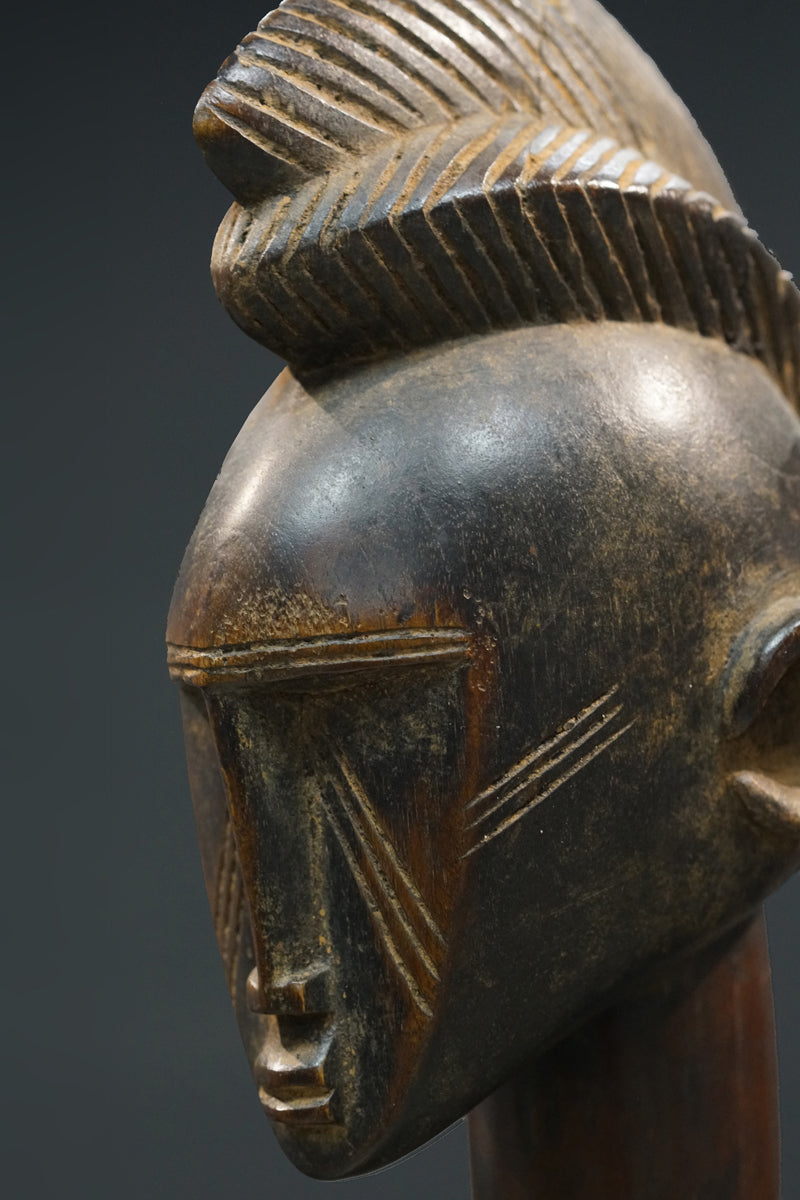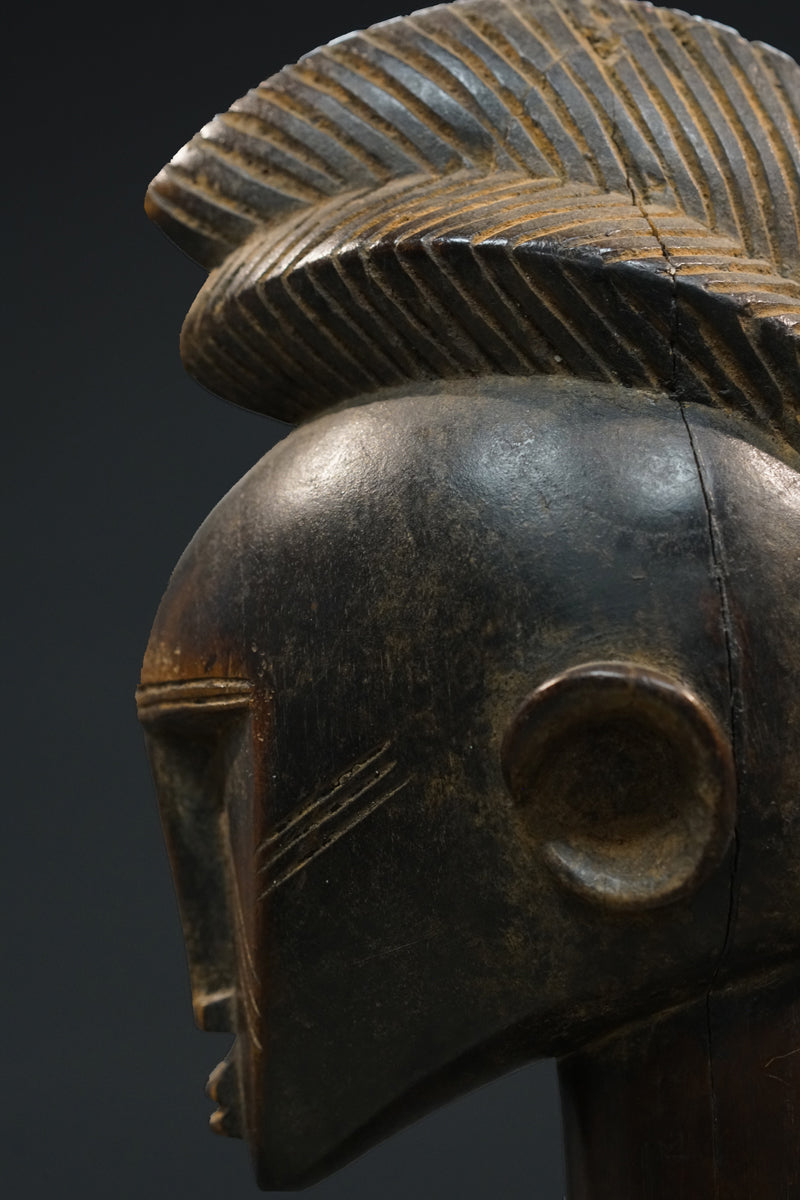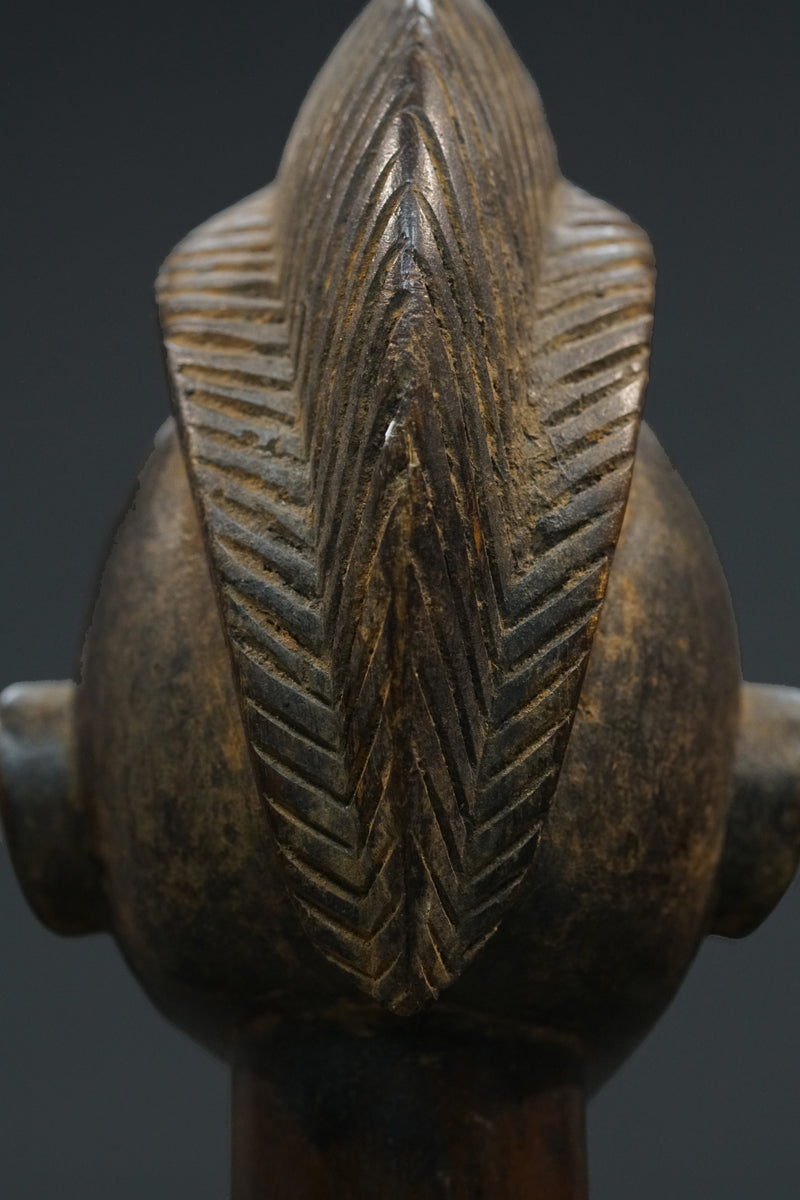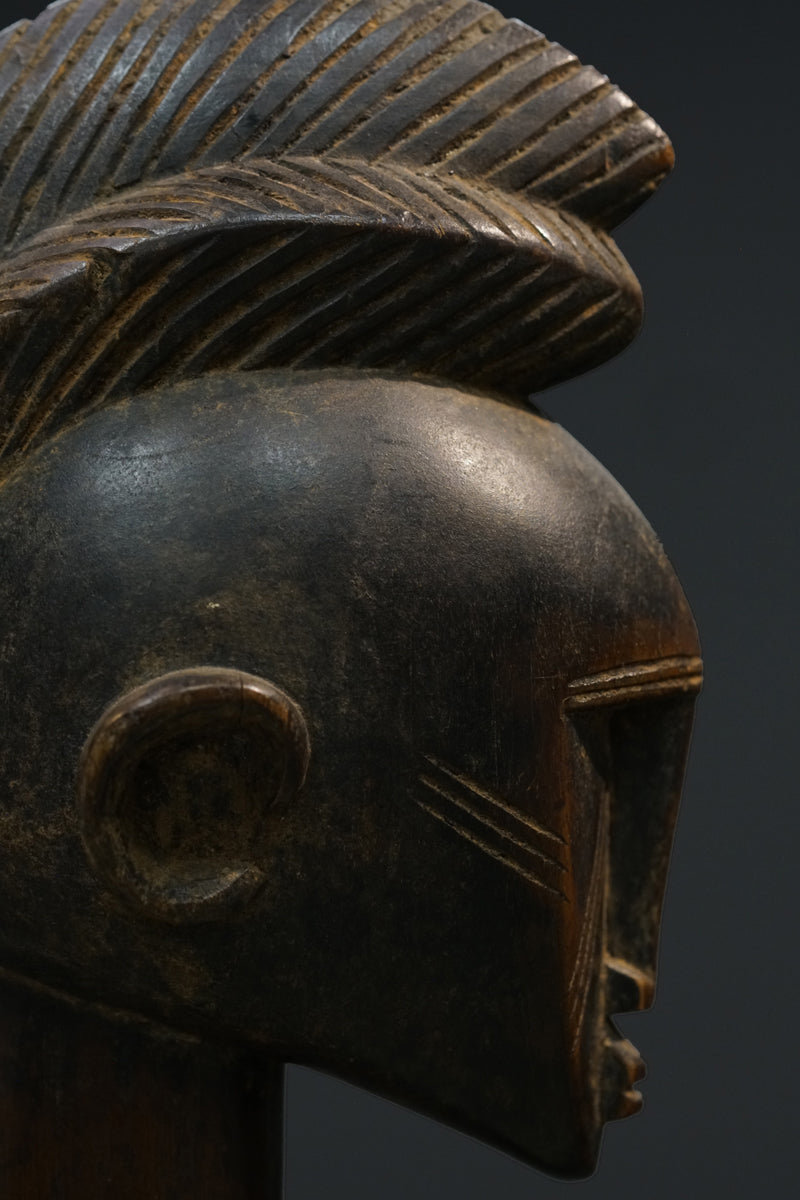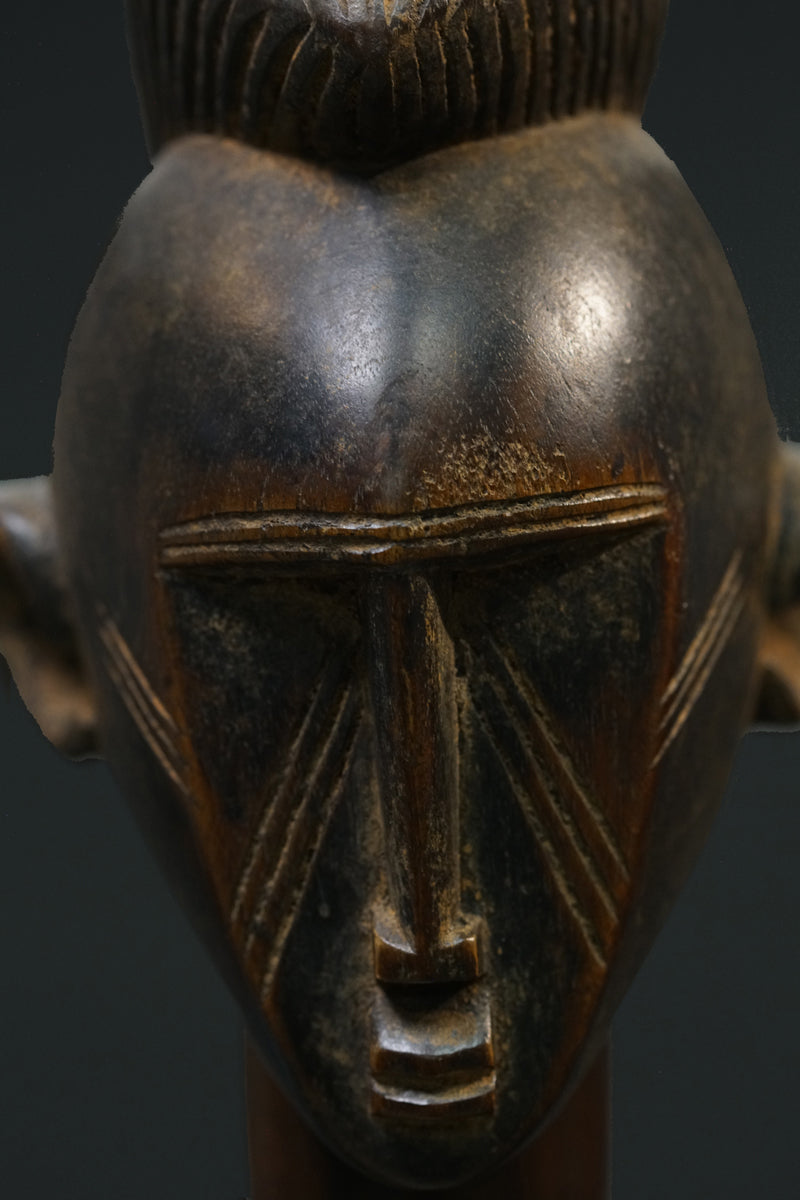wolfgang-jaenicke
A pair of Senufo rhythm stompers called déblé
A pair of Senufo rhythm stompers called déblé
Couldn't load pickup availability
A pair of Senufo rhythm stompers called déblé, the statues rise on a stout base with slightly bent legs, the openwork carved arms alongside a slender body with a pointed navel, protruding conical breasts, the elongated neck supporting a pointed-chinned head, a dome hairstyle framed by semicircular ears; dark brown to blackened patina, clear signs of usage on arms and neck, heavy hardwood; Age cracks on the right sides of each sculpture.
This type of sculpture - known under the name deble - is one of the most famous works of West African Art. After the early 20th century, when the Massa movement destroyed most of the important Senufo objects, only a few old, authentic Rhythm Pounders were saved and came to the Western world. There are no sculptures from a time before 1900 existing anymore in the Senufo region of Ivory Coast, Burkina, and Mali. But in some rural regions, the old animistic tradition is still existing as also the funeral ceremonies, in which the deble rhythm pounder has its ritual function. There are differences in the ceremonies in comparison to the years before 1900. In particular, the holy graves don't exist anymore or aren't known by Western ethnologists. It was a secret field, where the Senufo placed their ritual sculptures in the forest. These precious objects would probably be stolen immediately because in nearly every village the Islamic influence becomes stronger and there are more people, who are against the old animistic tradition than decades before. Now, these objects are protected in huts close to the village. The patina is different than the extremely old sculptures of the end of the 19th century because they aren't exposed to the weather anymore, even the traces of use are the same. According to the last owner, this sculpture comes from the Northern part of the Senufo region, around Korhogo. Carving a sculpture like this requires a skilled craftsman with a high degree of old traditional knowledge. The statics is perfect, but not in reality, no considerable age-crack, and extremely hard wood, an incredible technical skill must be the base for the purpose of this statue: to pound this fragile but heavy sculpture rhythmically on the ground. Probably around 1930.
Homberger, Lorenz (Katalog) Die Kunst der Senufo aus Schweizer Sammlungen. Texte: Till Förster, Objektfotos: Wettsein+Kauf Zürich, Museum Rietberg, 1988, Koloss, Hans-Joachim; Förster, Till, Die Kunst der Senufo, Elfenbeinküste, 1979. Museum für Völkerkunde, Berlin, Burkhard Gottschalk Senoufo. Massa et les Statues du Poro, Düsseldorf: Verlag U. Gottschalk, 2002.
8.000 - 10.000, -Euro
Height: 109 cm / 105 cm
Weight: 6,8 kg / 6,3 kg
